Propain Sresh SL
Wheel Sizes: 29’’ or 29’’ front / 27.5’’ rear
Suspension Travel:
- Frame: 150 mm
- Fork: 160 mm
Geometry Highlights:
- Sizes offered: S, M, L, XL
- Headtube angle: 64.5º
- Reach (size Large): 480 mm
- Chainstay length (all sizes): 453 mm
Drive System Highlights:
- Motor: TQ HPR60
- Torque: 60 Nm
- Power: 350 W
- Battery: TQ 580 or 360 Wh
- Display: TQ HPR In-Frame Color Display
- Remote: TQ HPR Remote
Frame Material: Carbon fiber
Price: Complete bikes from about $5,999 to $12,908 USD (price at time of publishing for stock builds & customized options)
More Specs (click to expand)
Blister’s Measured Weight: 43.4 lbs / 19.69 kg (size Large, 580 Wh battery, custom build, no pedals)
Test Location: Colorado
Reviewer: Dylan Wood: 5’10.5”, 160 lbs / 179 cm, 72.5 kg
Test Duration: 3 months
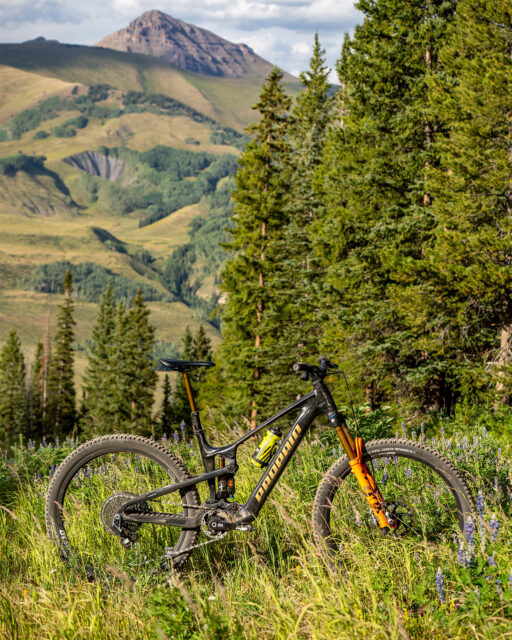
Intro
Propain has been in the eMTB business for a little over six years now, sticking to the full-power category — that is, until now.
Propain’s new Sresh SL is their new weight-conscious eMTB, and only the second mountain bike so far to integrate TQ’s HPR60 drive system. Call it light-assist, call it mid-assist — but whatever you call it, the new Sresh SL eMTB is designed to be lighter, quieter, and more “natural feeling” than Propain’s other pedal-assist offerings.
Propain has mostly stuck to the same formula as their mid-travel Sresh CF, while also designing the Sresh SL to be a different spin on a versatile eMTB. You can check out our Full Review after 3 months of riding below, but before that, let’s get into the details.
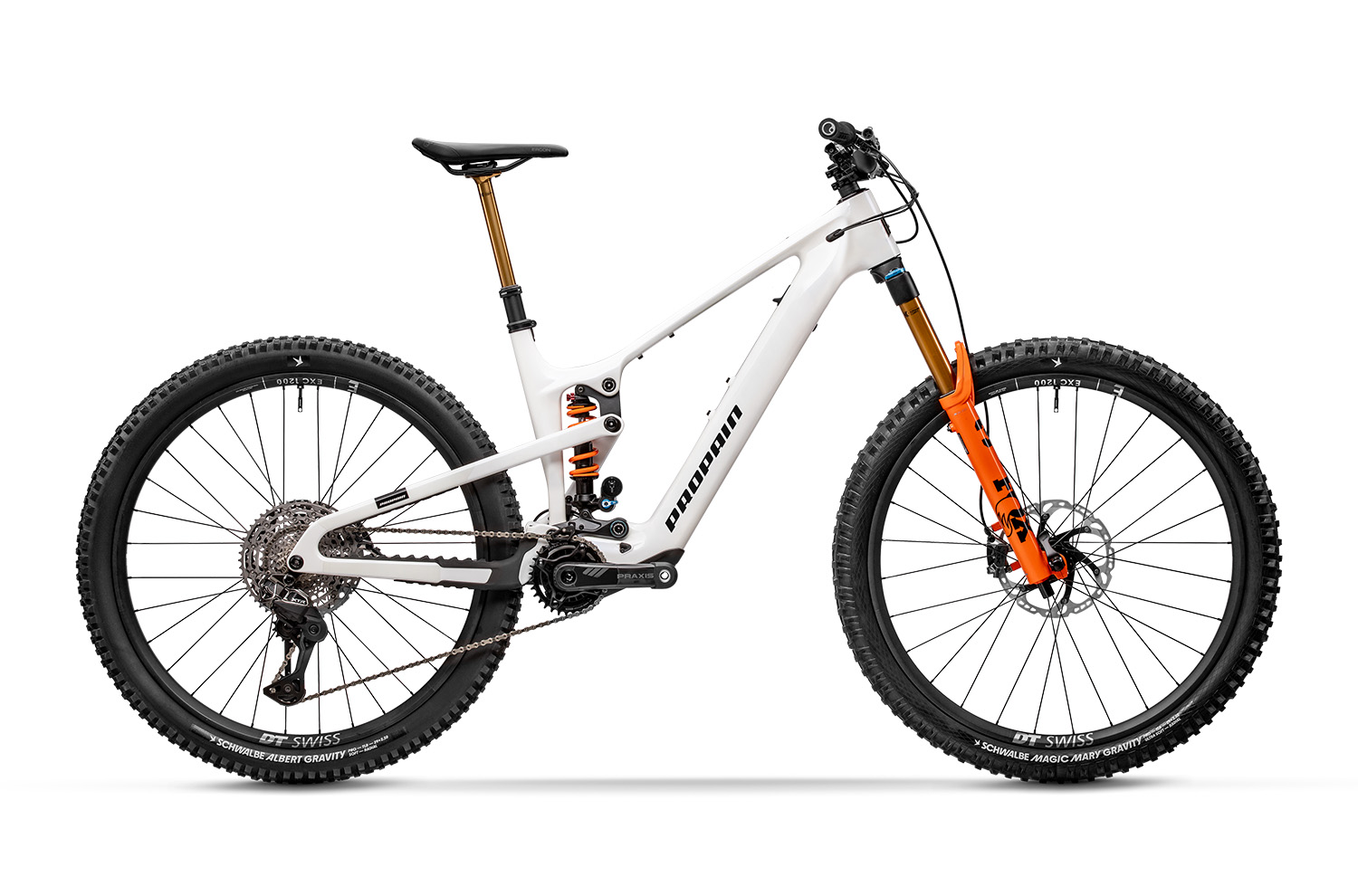
The Frame
The Sresh SL frame is only available in a high-modulus carbon fiber, and it keeps the same 150 mm of rear travel as its full-power sibling, the Sresh CF. Additionally, this new eMTB uses Propain’s standard PRO10 suspension layout, which is a dual mini-link design that compresses the shock from both ends, instead of using a more conventional fixed mount at one end of the shock.
Propain’s PRO10 suspension gives the Sresh SL a leverage curve with 25% progression, which is on the more progressive end of the spectrum while certainly remaining inside conventional standards for today’s eMTBs. Additionally, liveliness and efficiency appear to be a goal with the Sresh SL, accentuated by its higher anti-squat numbers, sitting at around 125% at sag (30% of rear suspension travel) with a 34-tooth chainring up front, and on a 50-tooth cog in the rear. Propain states that the Sresh SL’s suspension kinematics are designed with air and coil shock options in mind.
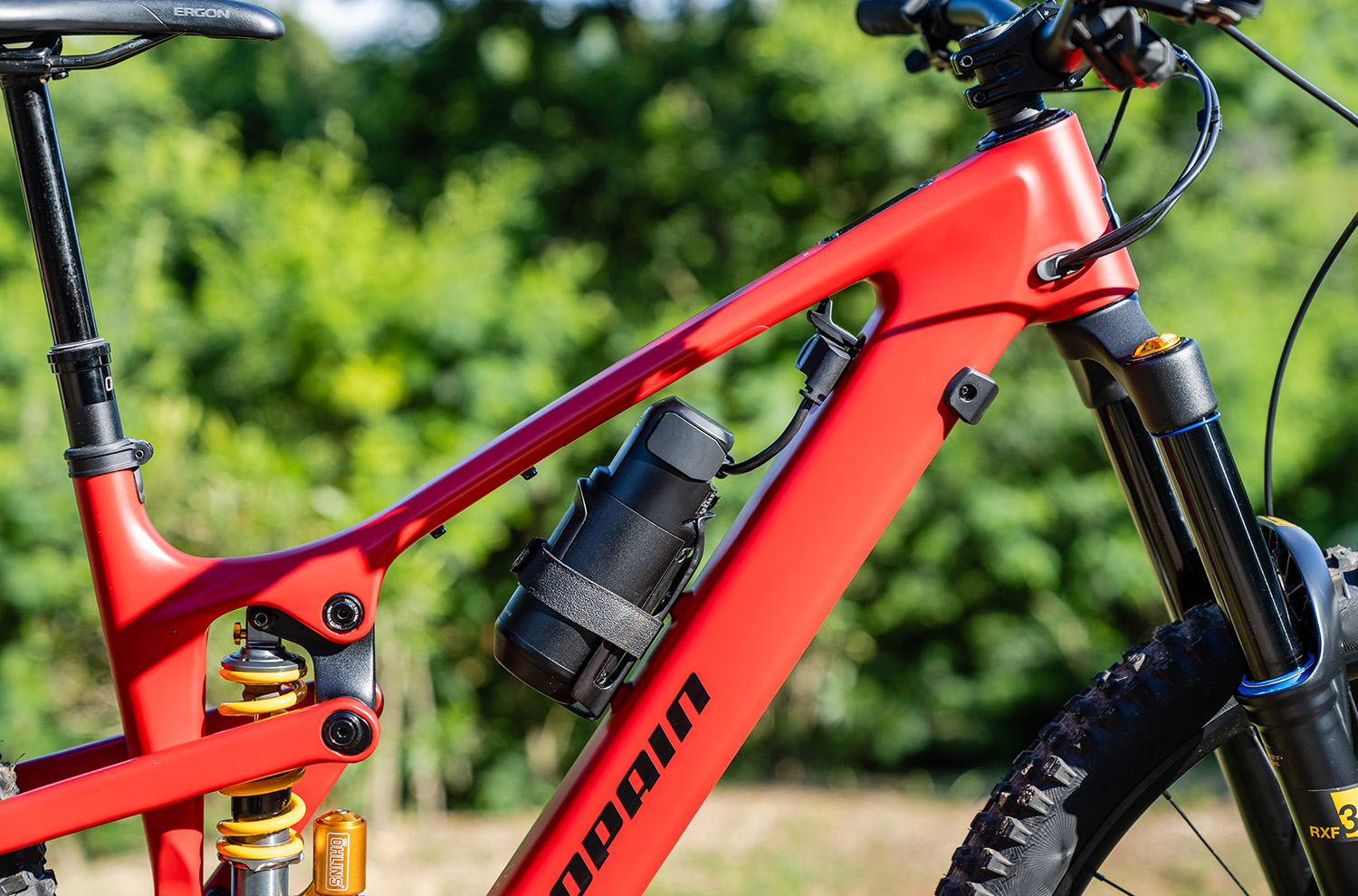
The Sresh SL has water bottle and tool mounts inside the front triangle, 12×148 mm rear axle spacing, a decent bit of frame protection, and a SRAM UDH. Additionally, it’s worth mentioning that the Sresh SL integrates the TQ HPR60 drive system very cleanly into the frame — more on this next.
The Sresh SL is available in three colors and has a ton of different head badges and decal options that provide a considerable amount of personalization.
Drive System
As I mentioned earlier, the Sresh SL is only the second eMTB to integrate TQ’s HPR60 drive system, which launched a few weeks ago as of publication. Propain refers to HPR60 as a “mid-assist” system (sure, why not), designed to provide a quiet and natural-feeling ride. I’ve been testing HPR60 on the Yeti MTe, and so far, I’m a big fan of TQ’s latest drive system.
As the name suggests, the HPR60 has 60 Nm of torque, paired with a max output of 350 watts. In short, this system is designed with power delivery and heat-shedding in mind, with cooling fins aiding in the latter. Additionally, HPR60 comes with an integrated color top tube display. The HPR60 is controlled via a simple remote on the left side of the handlebars. TQ makes a range extender for their drive systems that adds 160 watt-hours of battery life and mounts to standard water bottle bosses.
Integrated into the Sresh SL frame is a battery door that can be removed without tools. Behind this door is a place to store a multi-tool, and the Sresh’s TQ battery can be removed with one Allen key by loosening a bolt near the top of the underside of the down tube. Propain is offering the Sresh SL with two different battery sizes, 360 Wh and 580 Wh — more on this in the “Build Kits” section.
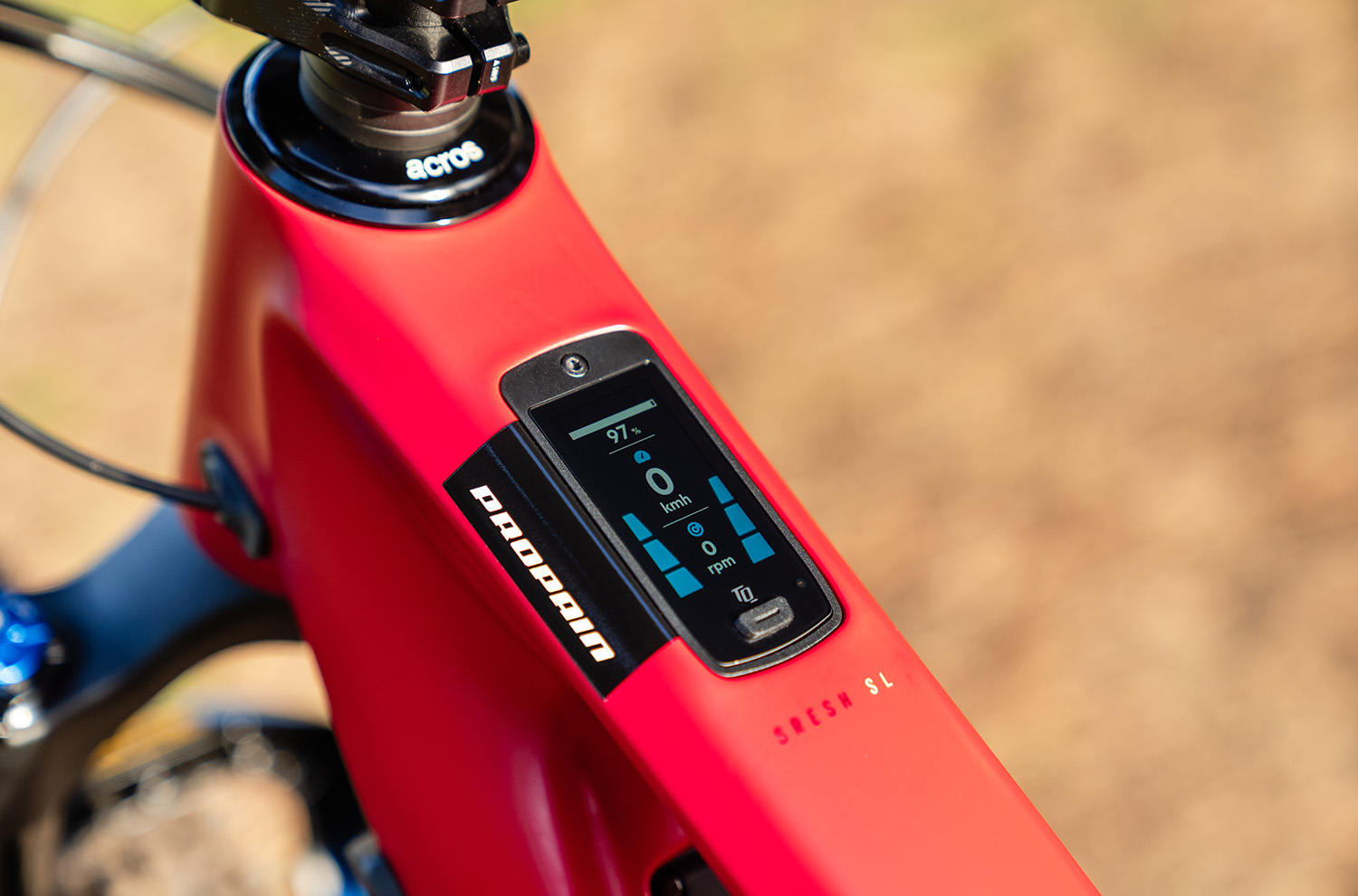
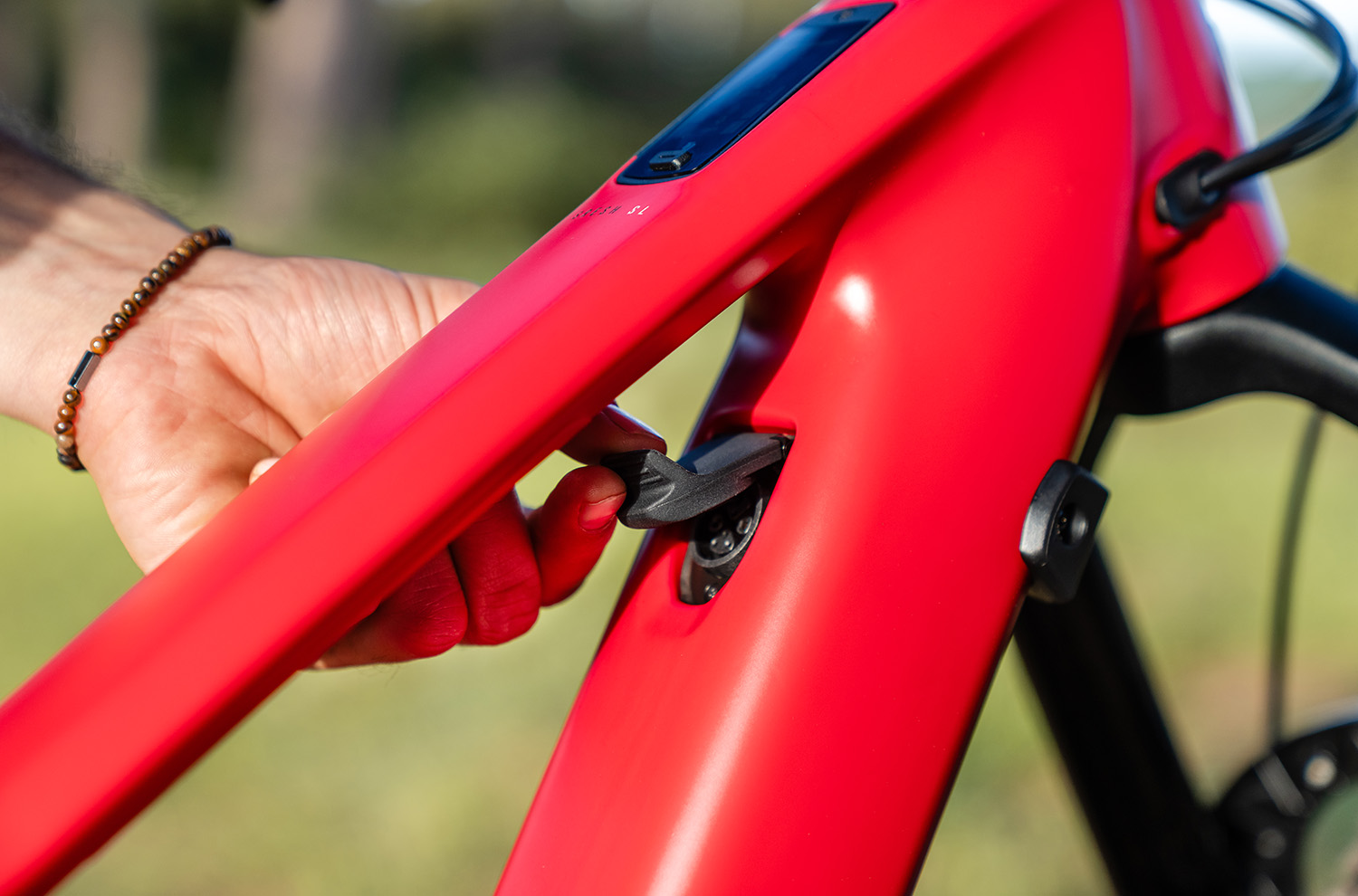
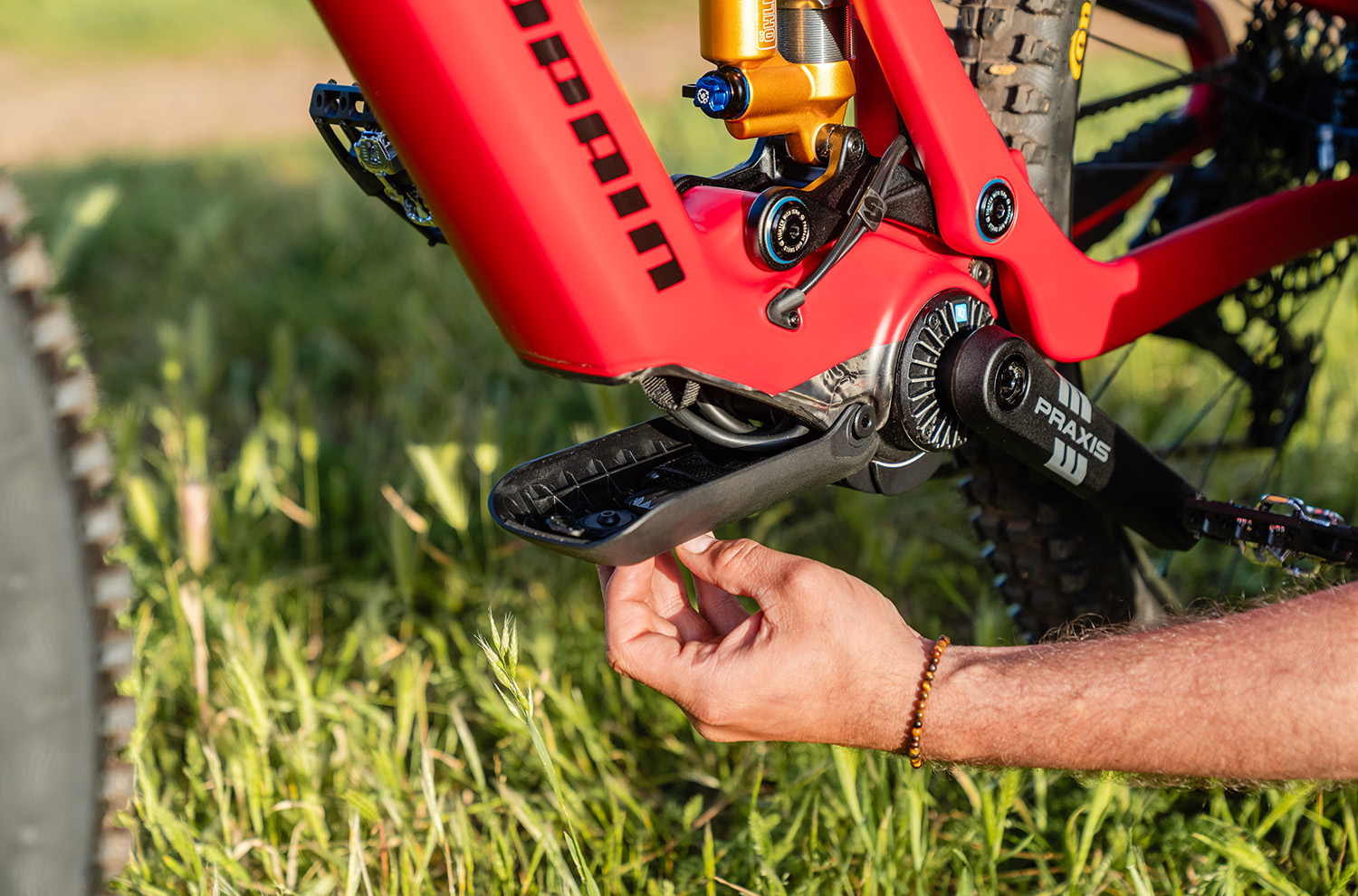
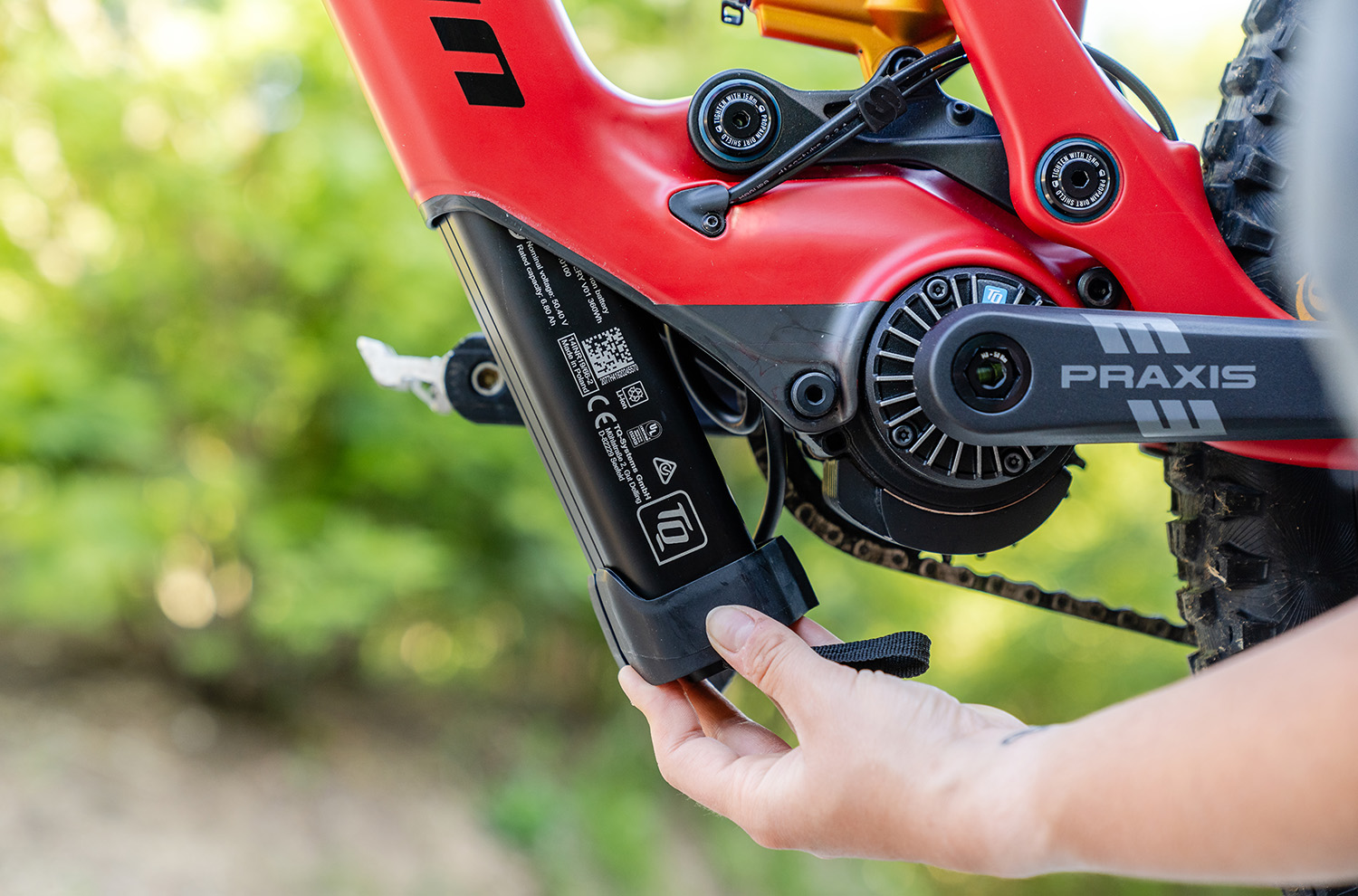
Fit & Geometry
The Sresh SL uses strikingly similar geometry to the full-power Sresh CF. It’s available in four sizes, Small through Extra Large. A glance at the geometry chart shows modern numbers with a few details that stand out. With full 29” wheels, the Large Sresh SL has a reach of 480 mm, which is pretty average for this class. In the same wheel size configuration, the Sresh SL has a 64.5º head tube angle and an effective seat tube angle of 78º.
Propain uses the same length chainstays for all sizes of the Sresh SL, and they’re long ones. At 453 mm in the full 29er configuration, these chainstays are on the lengthier side of their class. The stack height of the 29” Sresh SL is at 632 mm for the size Large, which is pretty average for bikes with 160 mm forks.
As I’ve alluded to a few times, the Sresh SL is available as both a full 29er as well as a mixed-wheel bike with a 29” front wheel and a 27.5” rear wheel. A pair of flip chips where the rear triangle meets the upper linkage handle the swap. Switching the orientation of these chips allows you to run either size wheel out back. But, compared to the Sresh SL with 29” wheels front and back and the chips in the “29” setting, running a smaller wheel out back, even with the chips set to the “27.5” setting, does alter the geometry slightly. Doing this shortens the reach by 5 mm, increases the stack height by 4 mm, slackens the head and seat tube angles by 0.4º, shortens the chainstays by 3 mm, and lowers the bottom bracket by 6 mm.
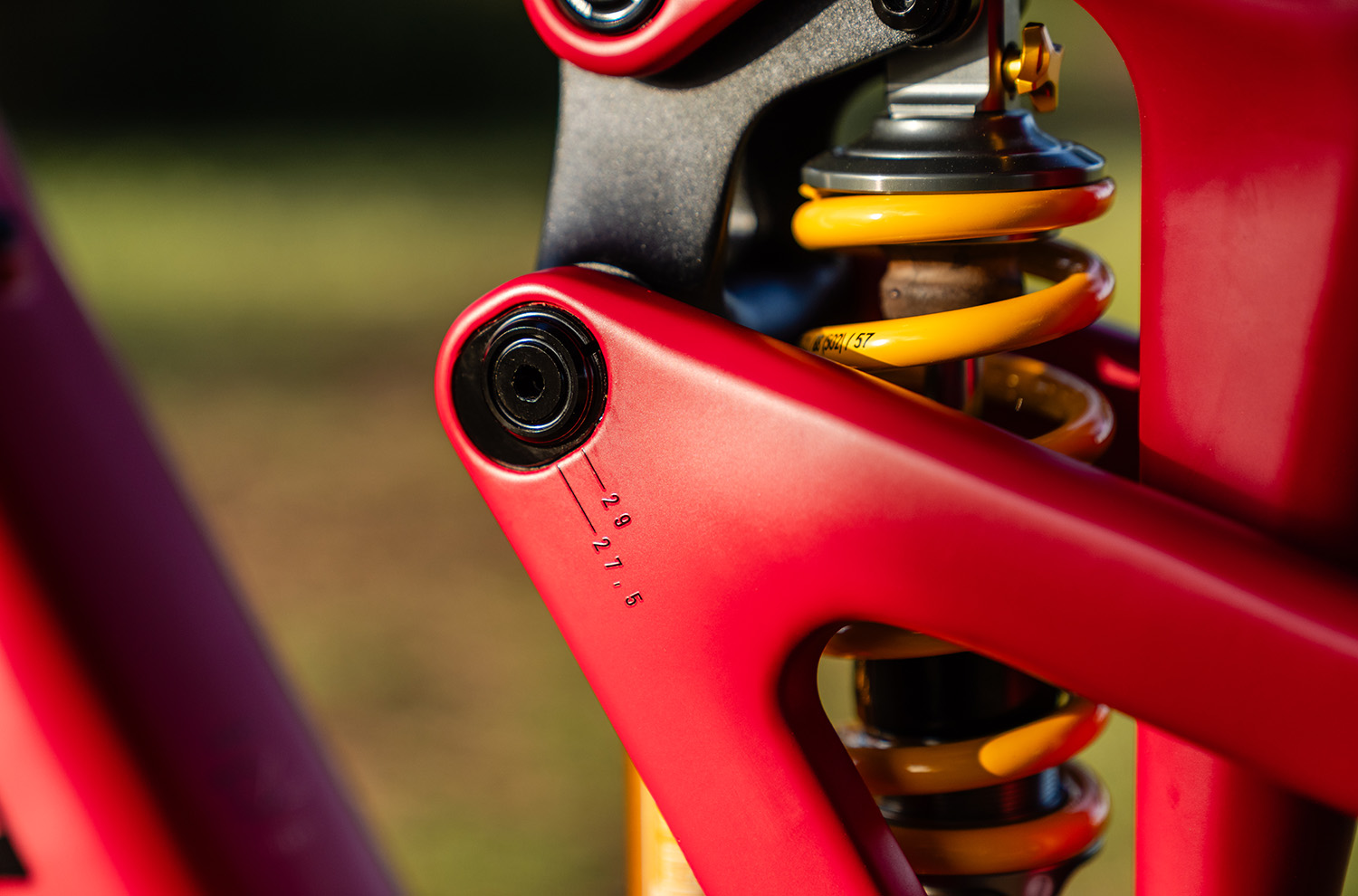
Interestingly, Propain also condones running the Sresh SL with a 27.5” wheel out back, but leaving the flip chips in “29” mode — a “secret menu” setting they call “Shred Setting.” Propain states, “If the low position (marked ‘29’) is used in the mixed wheel setup, this results in a more downhill-orientated geometry, but it works well and is even preferred by some of our athletes. The head angle is slacker, the reach is more compact, and the bottom bracket is lower.”
The full geometry for the Sresh SL is below:
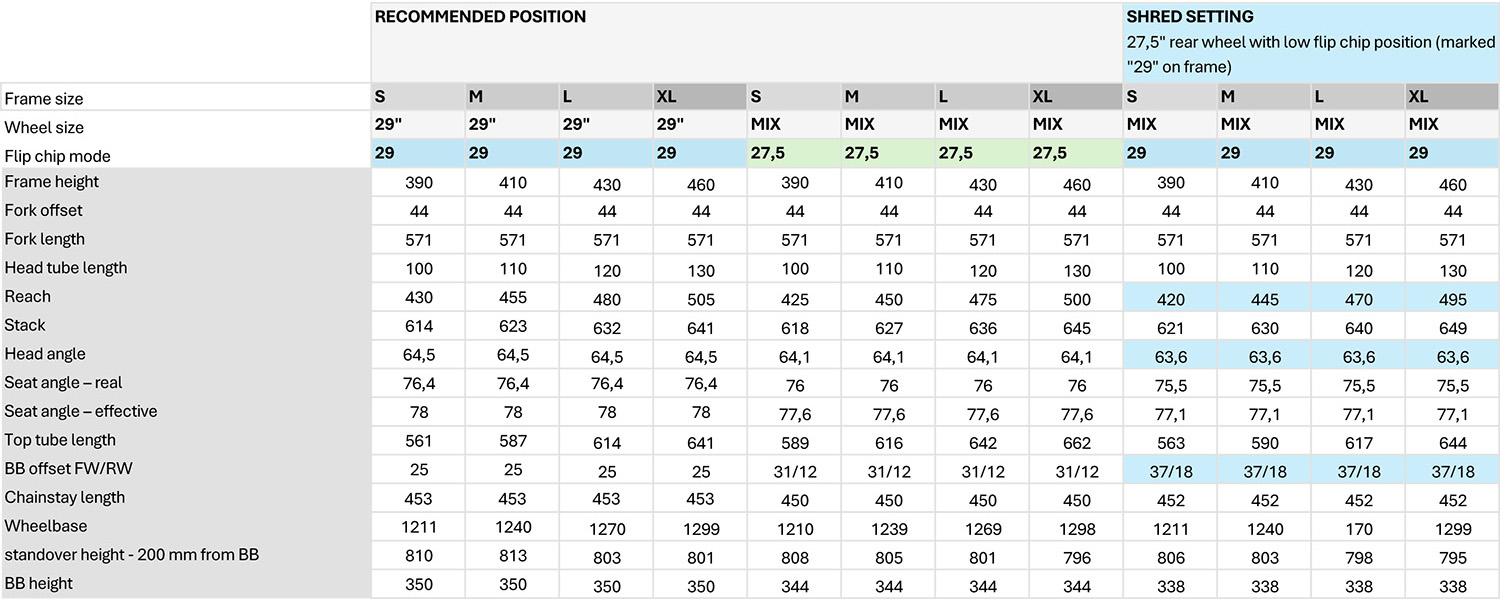
The Builds
Propain offers five different build kits for the Sresh SL, as well as two additional kits only available in the North American market — the “Signature” kits. Additionally, as with all PROPAIN bikes, their online configurator allows for extensive customization on the Sresh SL in case one might want different suspension, brakes, wheels, tires, etc. From the cockpit to wheel size to cable routing, several details can be tailored independently from each other.
All five standard build kits come with the 360 Wh TQ battery, while the two North American “Signature” kits use the heavier, higher capacity 580 Wh battery. Conveniently, the TQ battery can be swapped with a single Allen key, meaning you aren’t married to whatever battery size comes on your Sresh SL, though you will need to purchase the other size of the battery aftermarket.
The full build details are as follows:
Base (€5,994):
- Drivetrain: SRAM Eagle 70 Transmission
- Brakes: SRAM DB8 (200 mm rotors)
- Fork: RockShox Psylo Gold RC (160 mm)
- Shock: RockShox Deluxe Select
- Wheels: NEWMEN Performance 30
- Dropper post: OneUp V3
Bomber (€6,629):
- Drivetrain: Shimano XTR Di2
- Brakes: Magura MT5 (203 mm rotors)
- Fork: Marzocchi Bomber Z1 (160 mm)
- Shock: Marzocchi Bomber Air
- Wheels: NEWMEN Performance 30
- Dropper post: OneUp V3
Swedish Gold (€7,939):
- Drivetrain: SRAM Eagle 70 Transmission
- Brakes: SRAM Maven Silver (200 mm rotors)
- Fork: Öhlins RXF 38 (160 mm)
- Shock: Öhlins TTX 22 Coil
- Wheels: DT Swiss EX1700
- Dropper post: OneUp V3
Ultimate (€8,239):
- Drivetrain: SRAM GX Eagle Transmission
- Brakes: SRAM Maven Silver (200 mm rotors)
- Fork: RockShox Lyrik Ultimate (160 mm)
- Shock: RockShox Super Deluxe Ultimate
- Wheels: NEWMEN Beskar 30
- Dropper post: RockShox Reverb AXS
Factory (€10,499):
- Drivetrain: Shimano XTR Di2
- Brakes: Shimano XTR (203 mm rotors)
- Fork: Fox 36 Factory Grip X2 (160 mm)
- Shock: Fox Float X 2-position
- Wheels: DT Swiss EXC1200
- Dropper post: Fox Transfer Factory
Signature 1 ($6,999 USD):
- Drivetrain: SRAM Eagle 70 Transmission
- Brakes: Magura MT5 (203 mm rotors)
- Fork: Marzocchi Bomber Z1 (160 mm)
- Shock: Marzocchi Bomber Air
- Wheels: Crankbrothers E-Bike Alloy
- Dropper post: OneUp V3
Signature 2 ($8,299 USD):
- Drivetrain: SRAM GX Eagle Transmission
- Brakes: SRAM Maven Silver (200 mm rotors)
- Fork: RockShox Lyrik Ultimate (160 mm)
- Shock: RockShox Super Deluxe Ultimate
- Wheels: DT Swiss EX1700
- Dropper post: OneUp V3
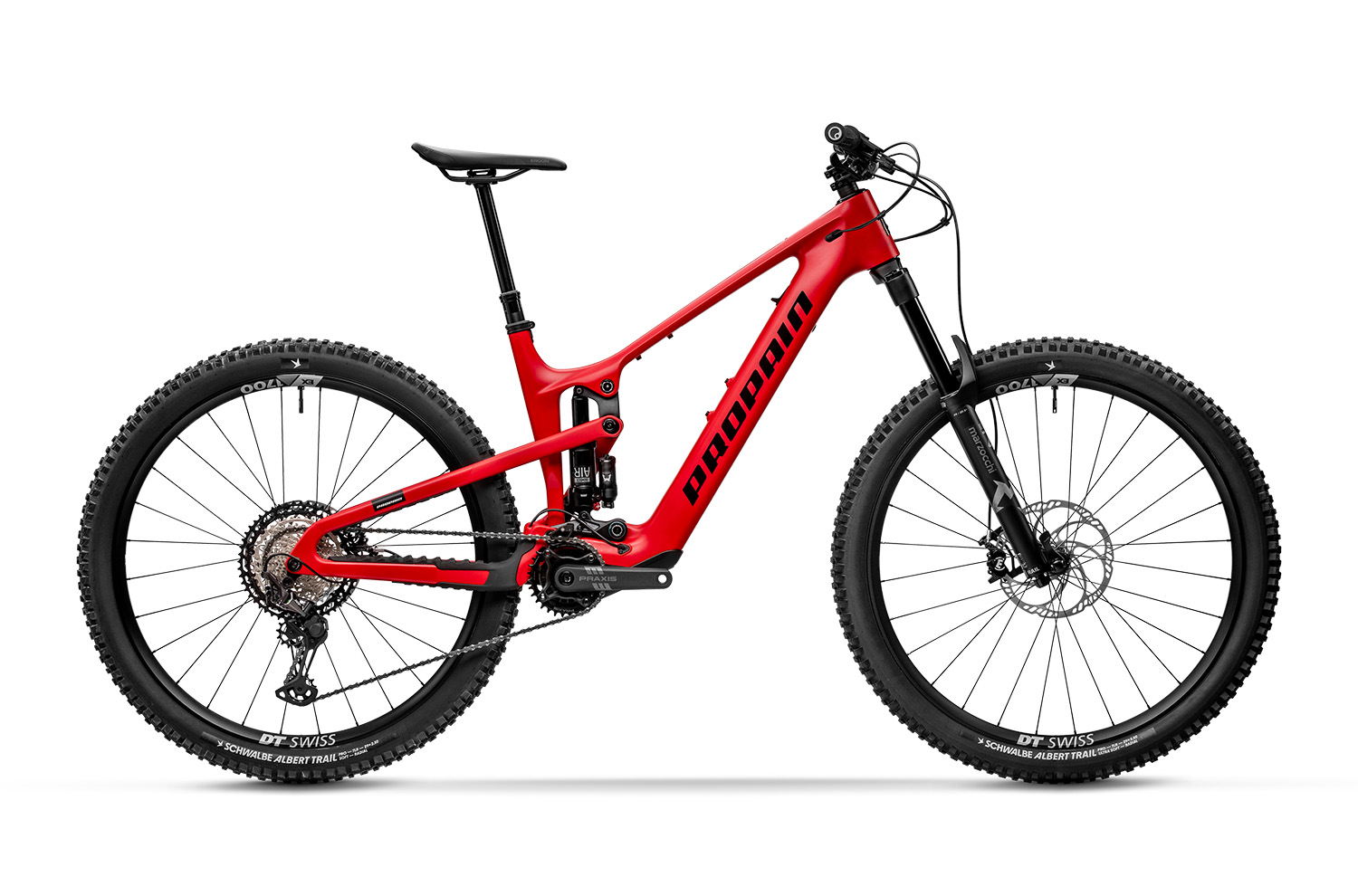
FULL REVIEW
Dylan Wood (5’10.5”, 160 lbs / 179 cm, 72.5 kg): The Sresh SL is the first Propain bike I’ve ever ridden, so I really didn’t know what to expect before swinging a leg over this lightweight eMTB. 3 months and many miles later, and I’ve become well-acquainted with the Sresh SL.
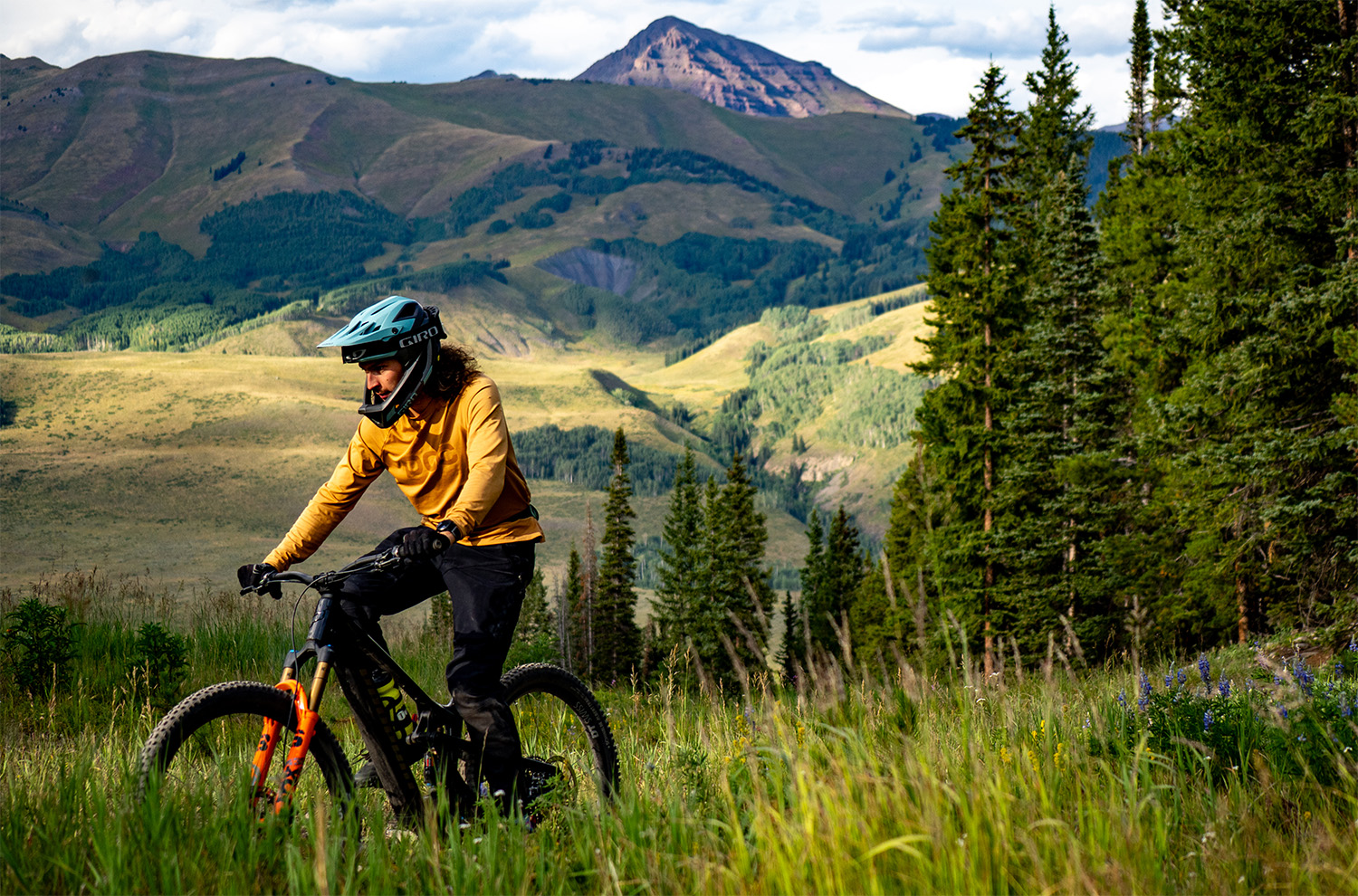
Fit and Geometry
Propain’s recommended sizing chart for the Sresh SL has me between the Medium and Large sizes. I’d have to be a bit shorter or taller for either size to feel “well-balanced,” as Propain puts it. Instead, I could have opted for a “playful” Medium or a “smoothly running” Large, which Propain uses to describe the impact of sizing up or down. After digesting the Sresh SL’s geometry chart, I opted for a Large, given that the reach number was a bit closer to my personal preferences, at 475 mm when using a mixed-wheel setup with the geometry flip chip in the high / 27.5” position.
And, I really came to like the fit of this bike. The seated pedaling position is comfortable yet well-suited for more intense efforts, allowing me to put in a lot of miles without discomfort, while also being able to put some power into the cranks when needed. The Sresh SL has a relatively steep effective seat tube angle at 77.6º (MX, 27.5” / high geo position), and in a world of eMTBs with slightly slacker ones in the name of more comfort when pedaling along flatter roads to access singletrack, I applaud Propain for sticking with geometry you’d likely see on an unpowered MTB as it tends to fit my riding environment a bit better — more on this later.
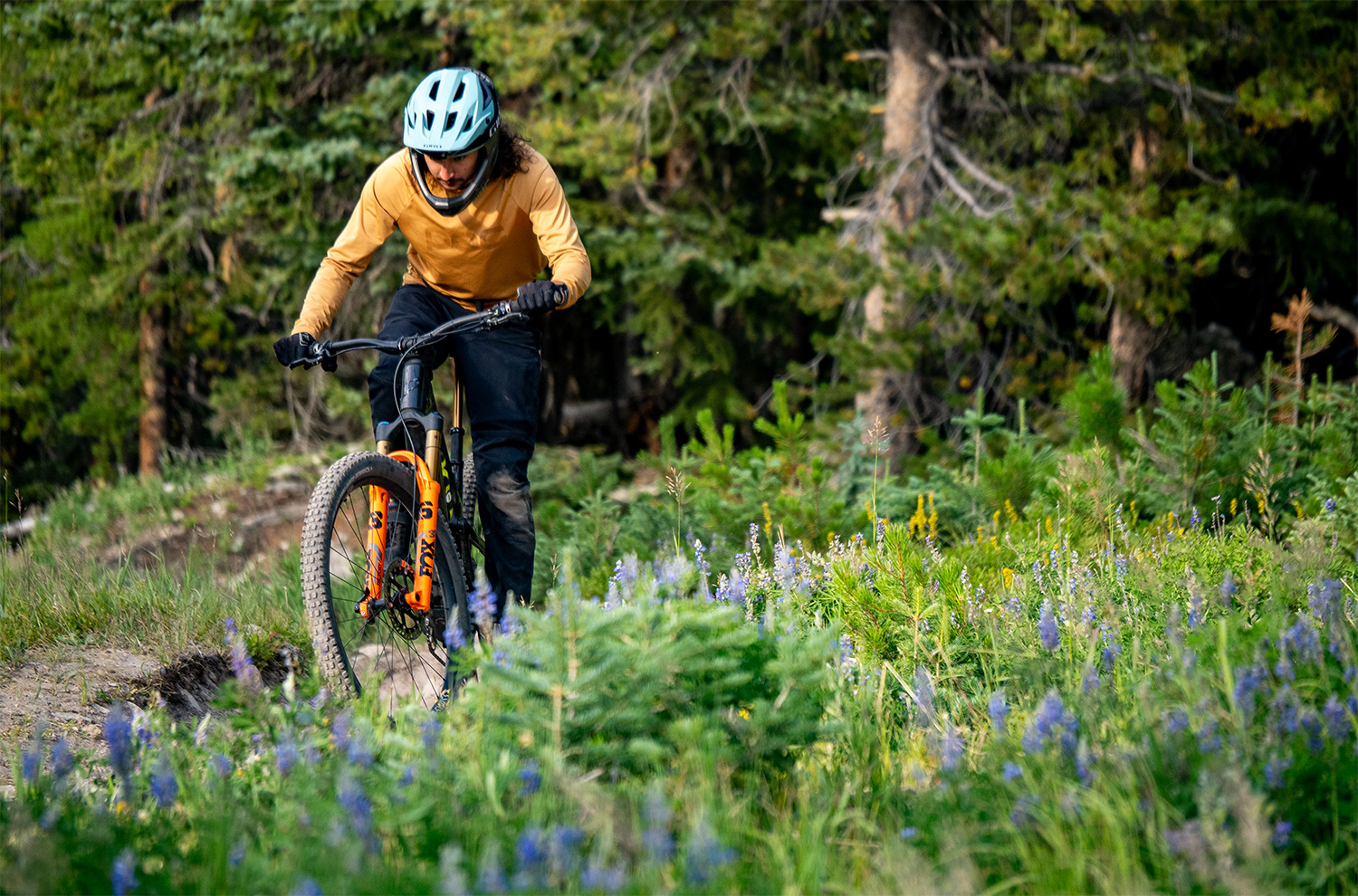
The Sresh SL features notably long chainstays, measuring 450 mm across all sizes in the mixed wheel setup and the corresponding geometry flip chip position. Paired with a pretty average stack height for its class at 636 mm (MX, 27.5” / high geo position), I found that this naturally biased my weight forward on the bike even when riding it fairly centered, resulting in great front wheel traction. Subsequently, I ended up running the stem all the way at the top of the steer tube — a very rare occurrence for me these days, as stack heights have grown on a lot of bikes.
Overall, I found the Large Sresh SL to fit well. For Crested Butte motorized singletrack, which tends to be fast and chunky, I appreciated the extra wheelbase length. However, if I were riding tighter terrain or placing a high emphasis on playfulness, I would probably opt for a Medium.
Climbing
On the way up, the Sresh SL combines above-average efficiency for its class with the TQ HPR60 drive system, which packs an impressive amount of power into its lightweight package. While many manufacturers opt for a more traction-rich pedaling platform on their eMTBs, Propain equipped the Sresh SL with slightly more supportive suspension that handles hard pedaling efforts quite nicely by reducing pedal bob. At the same time, the Sresh SL has just enough traction to tackle technical climbs, which, when paired with the 60 nm of torque available in the HPR60 motor, results in a bike that can crawl up truly challenging sections of trail.
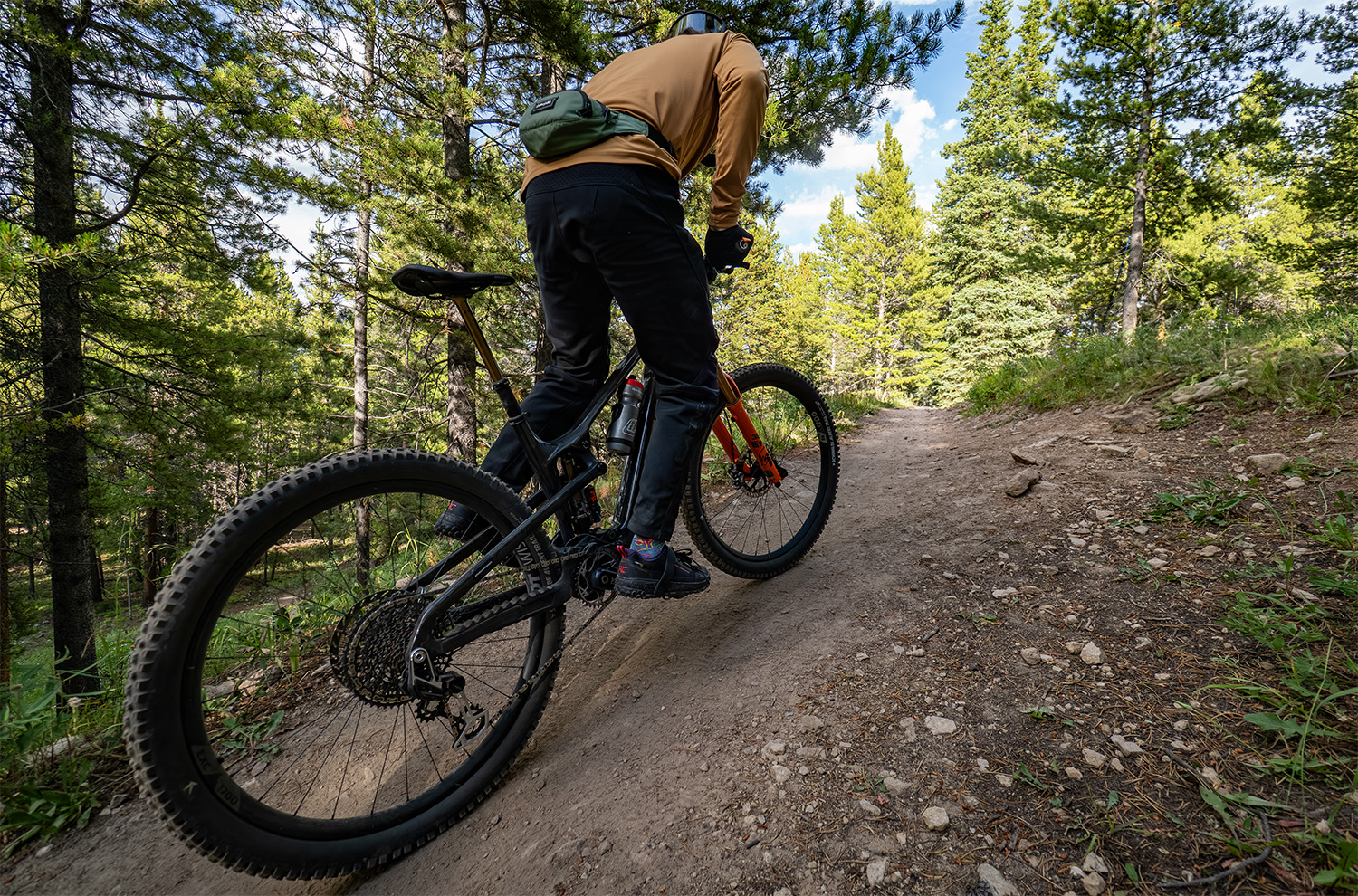
On steep, loose climbs, I am grateful for the Sresh SL’s long chainstays and steep effective seat tube angle, which do a great job of keeping the front wheel adequately weighted. We have a lot of these sorts of climbs here in Crested Butte, and I found that the Sresh SL could make it up just about anything. Of course, the HPR60 drive system isn’t as powerful as full-power options or even some other light-assist motors out there. But this drive system truly shines for its torque output and power delivery, and while it does require some more human input than full-power systems, it delivers solid power with excellent traction when grinding up steep, technical sections. I don’t think I ever spun out on this bike, which I can’t say about most of the full-power eMTBs I’ve ridden.
Overall, the Sresh SL provides a climbing experience very similar to that of an unpowered MTB while still justifying its ~10 lbs (4.5 kg) of battery and drive system weight with balanced, well-delivered pedal assistance. Its fit, suspension feel, and pedaling performance are quite easy to get used to, even if you don’t have any experience with eMTBs.
Descending
On the way down, the Sresh SL combines stable geometry with versatile suspension, resulting in a bike that does a great job of handling a wide variety of terrain instead of feeling like a specialized tool for a specific type of riding.
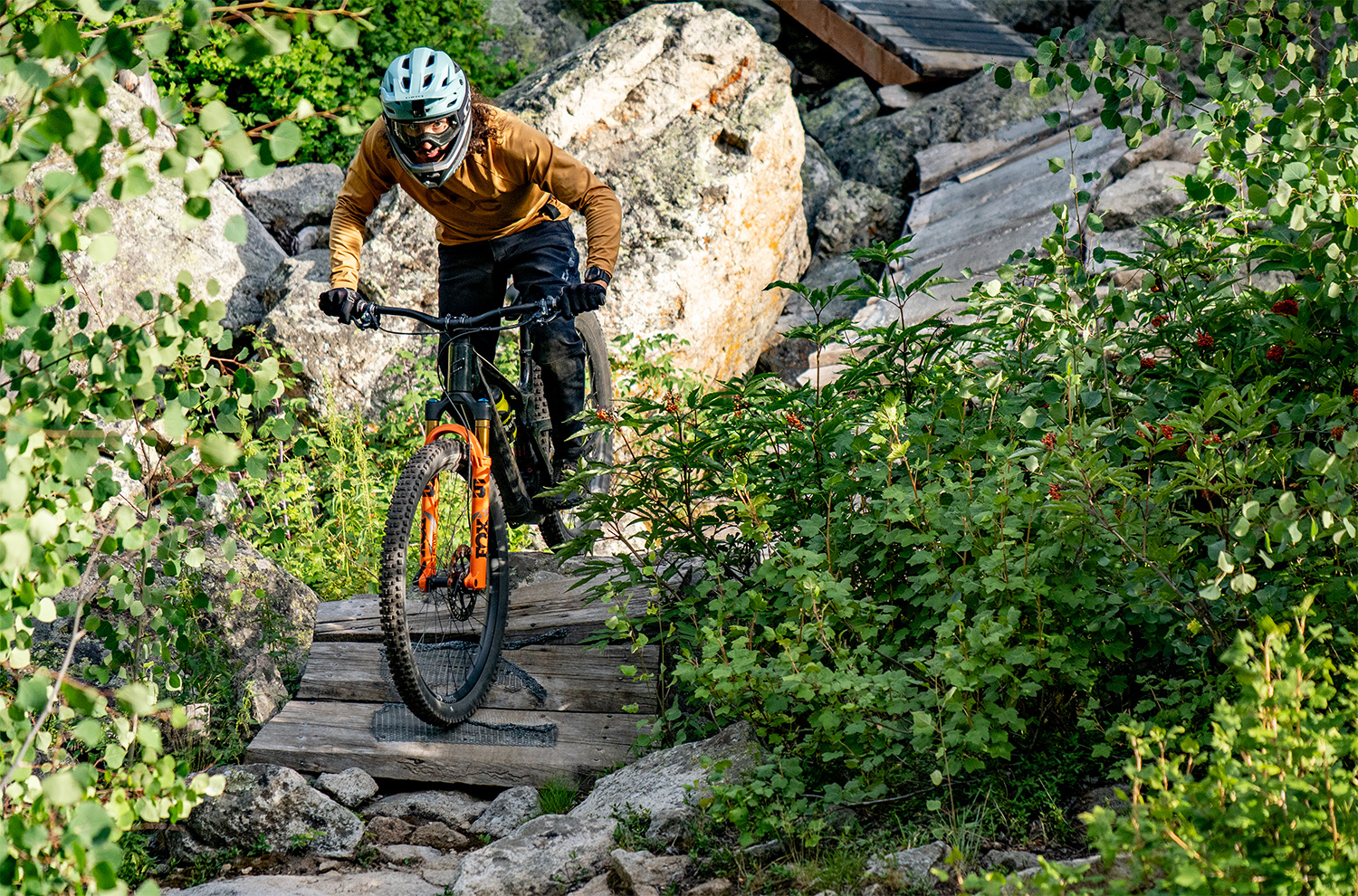
The Sresh SL’s suspension is on the more responsive and supportive end of the spectrum, particularly for the mid-travel eMTB class. It rewards you with speed when pumping over rollers and into corners, offering an engaging feel that allows the Sresh SL to still feel fun on mellower singletrack. That being said, this bike doesn’t feel very limited when you are testing its capabilities in steep, chunky terrain — its suspension is still active enough to provide good control and traction on rooty and rocky trails. It falls short of class leaders like the Yeti MTe in this regard, and it isn’t the most plush and smooth mid-travel eMTB out there. But it does a great job of balancing a few attributes, and the Sresh SL feels at home on a variety of trails for it. It doesn’t take much speed or effort to get the Sresh SL to feel alive, though it does perform best at slightly faster paces, where its suspension begins to feel better utilized as it goes deeper into its travel.
Combine this versatile, slightly more responsive suspension feel with the Sresh SL’s stable geometry, and this bike offers a great mix of both capable and dynamic attributes. The Sresh SL’s combination of moderate reach, long chainstays, and thoroughly modern 64.1º (MX, 27.5” / high geo position) head tube angle creates a long wheelbase and stable handling. The Sresh SL has a large sweet spot that allows the rider to sit between the wheels, allowing the bike to take care of much of the chaos happening underneath you. While this bike has 160 mm of travel up front and 150 mm in the rear, its geometry isn’t far off from many bikes with 10-20 mm more suspension travel, and its handling reflects that, with a calm, stable feel at high speeds. As I mentioned earlier, I found the handling and fit to be ideal with the stem at the top of the steer tube, where the fore-aft balance of the bike felt dialed. I also enjoyed the slightly more upright riding position this facilitated on the way down, too.
While the Sresh SL’s suspension rewards a more active riding style, I still found the Large Sresh SL to be moderately playful overall. It’s impressively light for its class, especially given that my test bike came with TQ’s largest 580 Wh battery. This allowed the Sresh SL to feel pretty nimble in the air. While its longer chainstays do prevent this bike from feeling very poppy at slower speeds, once they pick up a little bit, the Sresh SL is a fun bike to get airborne, without too much mass preventing it from temporarily escaping Earth’s gravity. Again, the Sresh SL’s combination of attributes results in a very adaptable experience, but folks who are after pure playfulness are likely better served by something lighter and quicker-handling, such as the Pivot Shuttle SL.
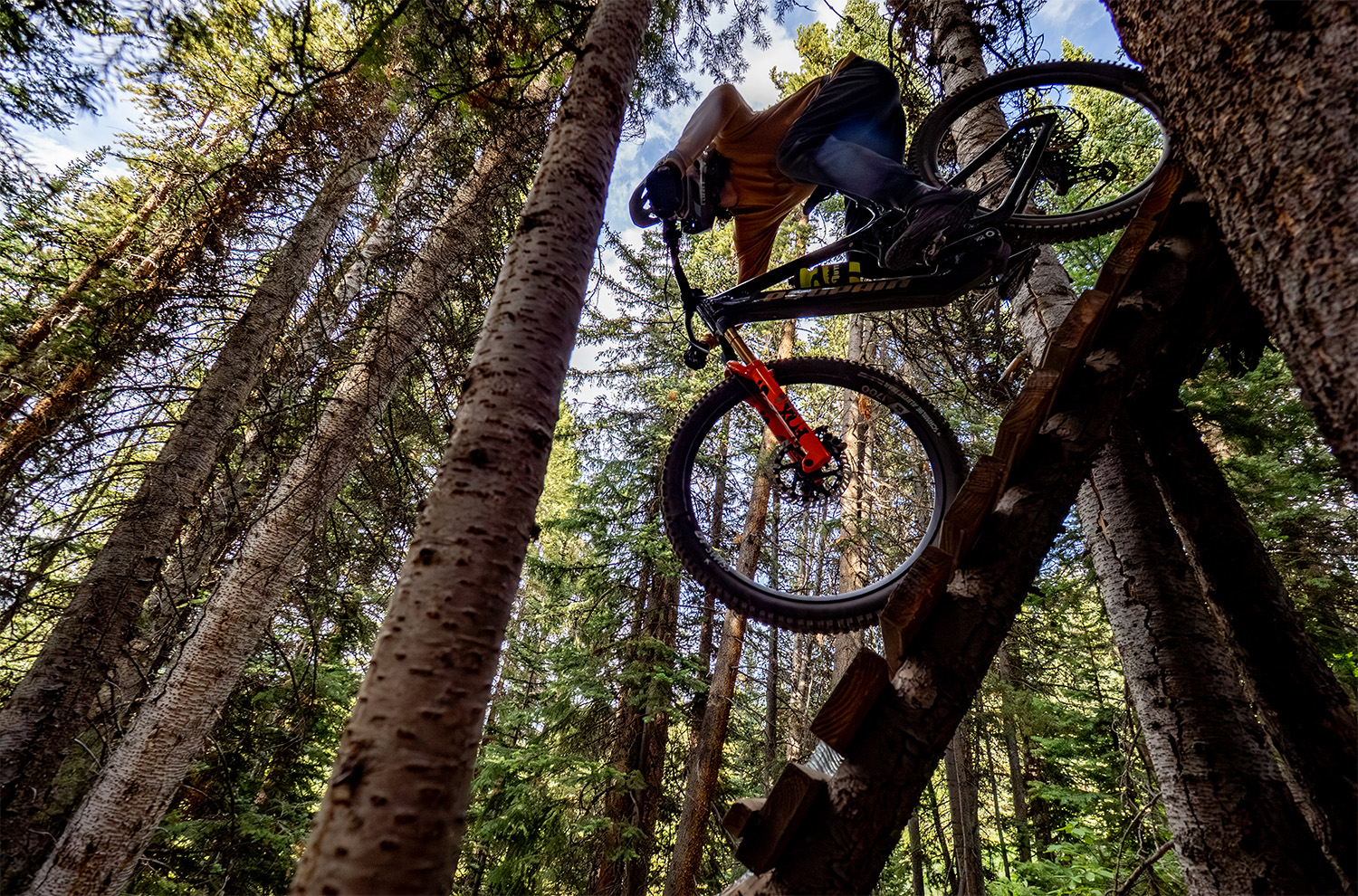
I also did a lot of experimenting with the Sresh SL’s 3 different wheel size and geometry configurations. Overall, I think I enjoyed this bike the best as a full 29er, where it leaned into its speedy and stable nature. With a slightly longer reach and chainstays in this configuration, combined with a slightly more forward weight bias, the full 29” Sresh SL feels sporty and capable, encouraging you to let off the brakes and let the bike run. With a smaller 27.5” rear wheel out back and the flip chip adjusted accordingly to the high / 27.5” position, the Sresh SL retains most of the attributes that I enjoy with the full 29” setup. But, as you might expect, the smaller rear wheel biases the rider’s weight a bit more rearward, requiring more care to weight the front end, and the Sresh SL has a more snappy feeling in corners that certainly helps make it feel a bit more nimble in tight terrain. I think that if I rode steeper and/or tighter trails, I would probably prefer the mixed-wheel setup.
Running the Sresh SL in Propain’s “Shred” setting is certainly worth trying. With a smaller 27.5” wheel out back and the geometry flip chip in the low / 29” setting, the Sresh SL is even lower and more slack. I was a bit worried that the bike would feel too one-dimensional in this setting, with a purely point-and-shoot attitude, but after trying it, I believe it offers something fun and interesting for the right kind of rider and terrain. I liked this mode best on steep, fast trails where you can let the bike run and enjoy the lower, more rearward weight bias. It’s surprisingly good at cornering in this mode, with its biggest weakness being flat and tight corners. But, when you can lean the Sresh SL into a nice supportive corner, the “Shred” setting really does, well, shred. Sure, you’ll need to be a bit more careful with your cranks when pedaling uphill, but the extra attention there is worth some extra stability on the way down, in my opinion.
The fact that the Sresh SL has two geo settings available with a mixed wheel configuration certainly makes for a good argument to buy this bike with a 27.5” wheel out back (I don’t think this bike would ride that well as a full 29er with the geo flip chip in the high / 27.5” setting). But, at the end of the day, I’d recommend going with whatever wheel configuration you find yourself more comfortable on, with the full 29er having a leg up on fast, chunky trails, and the MX setup performing better on steep, tight terrain.
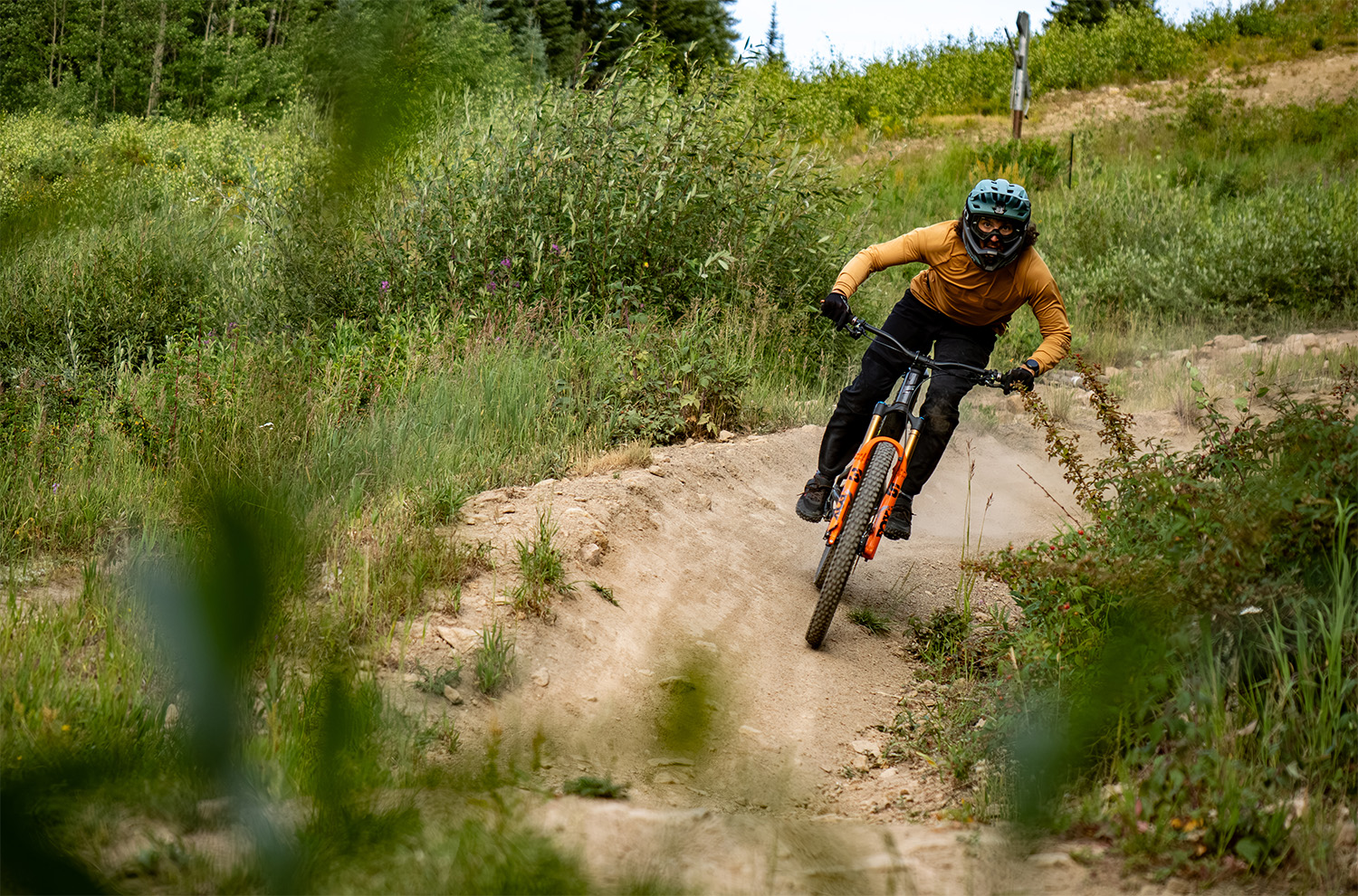
Drive System and Range
My first experience with the TQ HPR60 was on the Yeti MTe, which I rode alongside the Sresh SL for both of these bikes’ respective testing periods. You can check out my thoughts on this relatively new light/mid/whatever-you-want-to-call-it-assist system paired with the 580 Wh battery at this same section in our MTe Full Review. My thoughts on the Sresh SL’s drive system remain the same, with a few new takeaways:
For some reason, the HPR60 drive system was even quieter on the Sresh SL. I’m not sure if noise levels vary motor to motor, or if the specific harmonics of the Sresh SL frame suppress sound a bit better, but it was noticeable. Not that this system is loud at all to begin with, but it was almost too quiet to notice on the Sresh SL.
This might not be an issue for a lot of folks, but it’s pretty annoying that you can only pair one bike at a time with the TQ app. If I were out riding the MTe one day, and then on the Sresh SL the next, I would need to disconnect the MTe and reconnect the Sresh SL while I still had cell service before being able to use the app’s features with the Sresh SL.
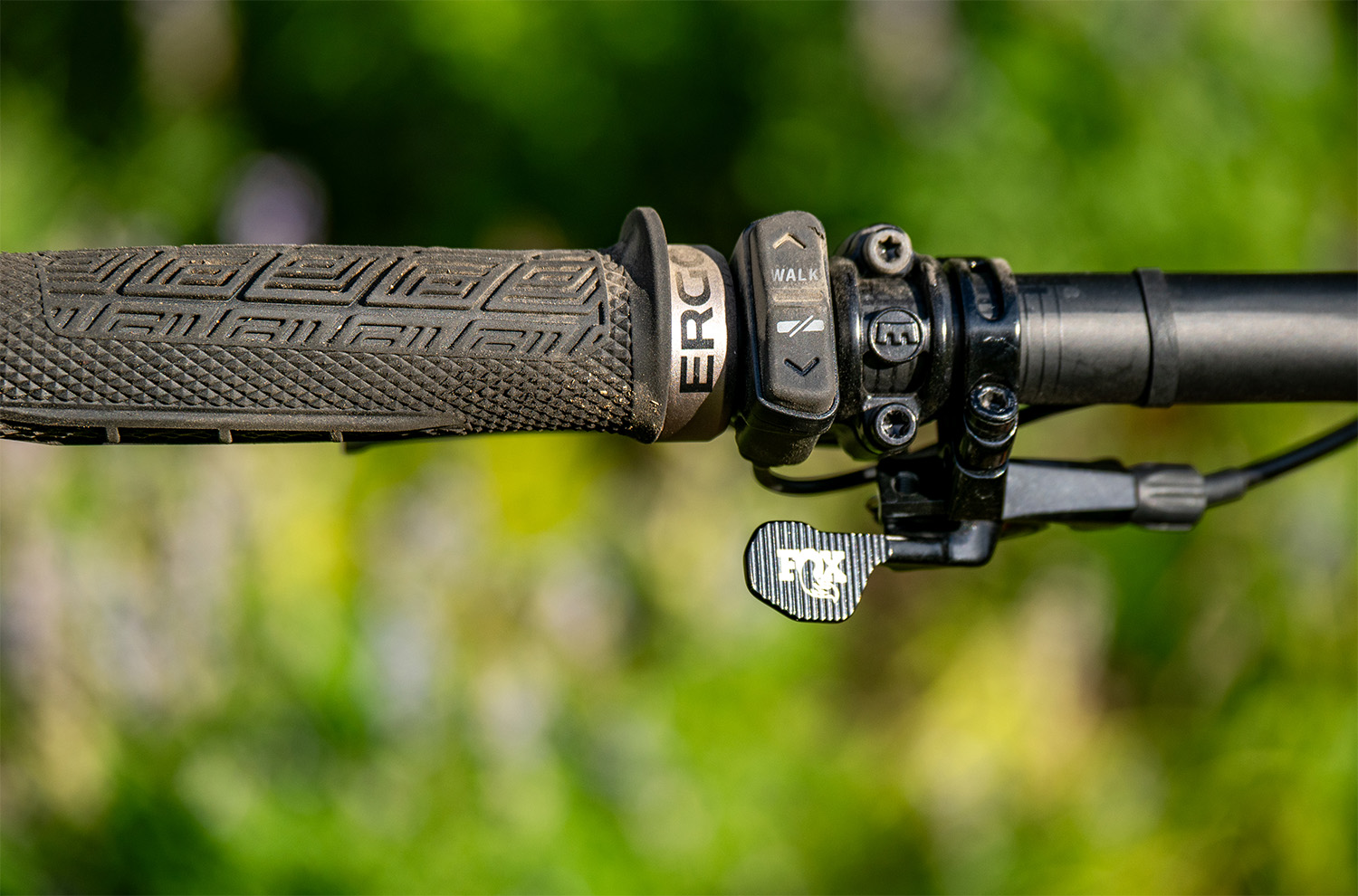
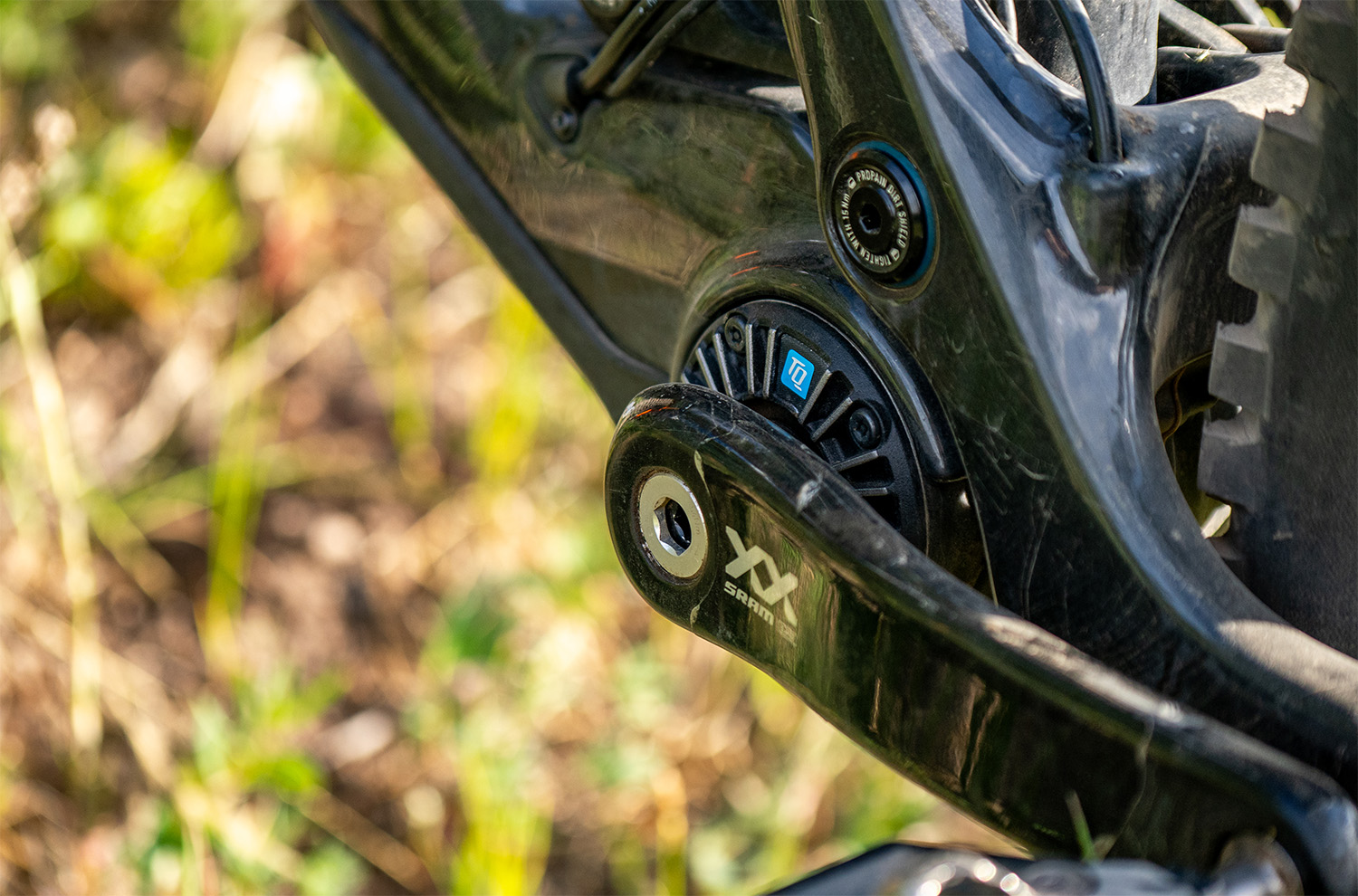
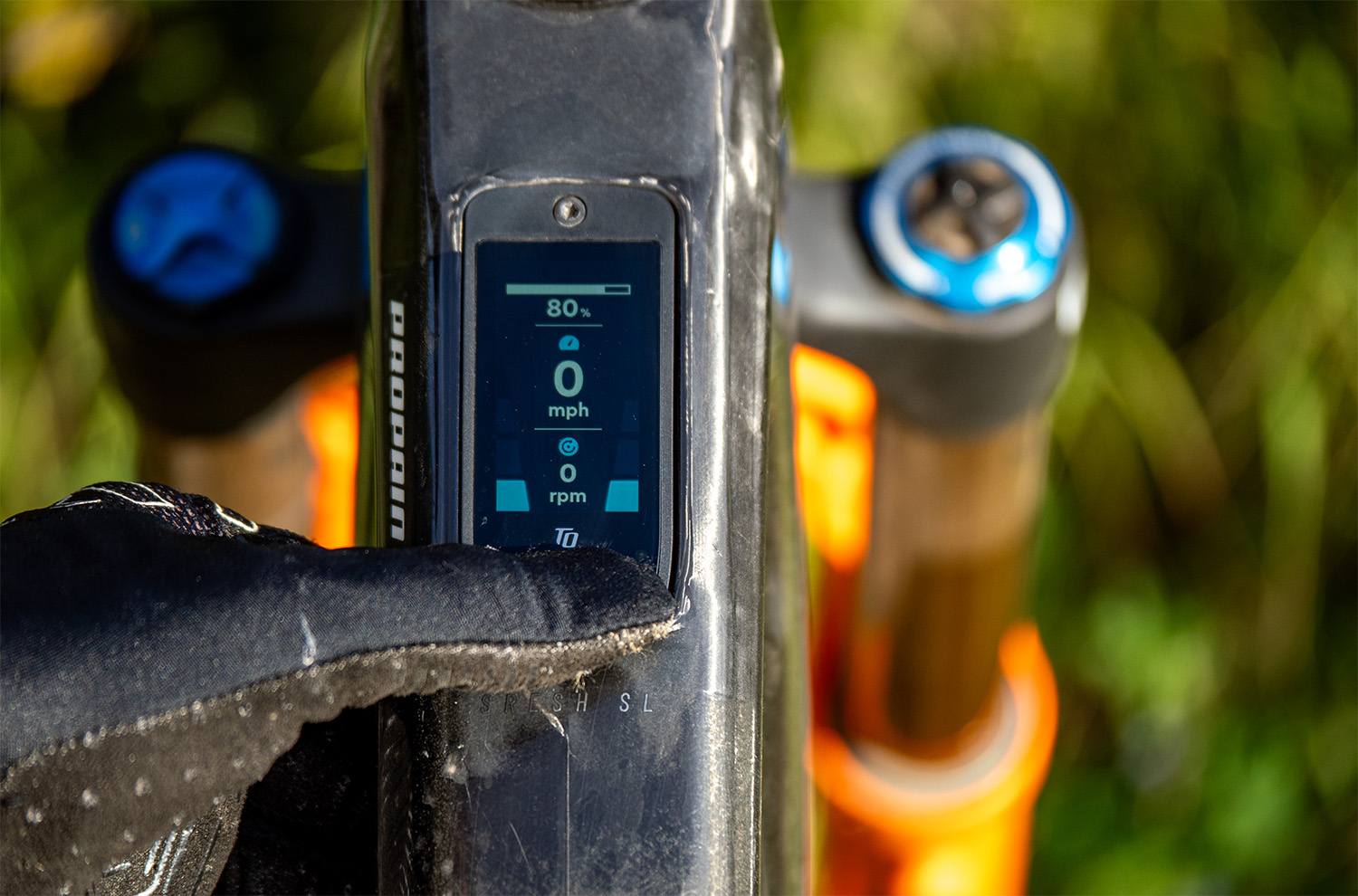
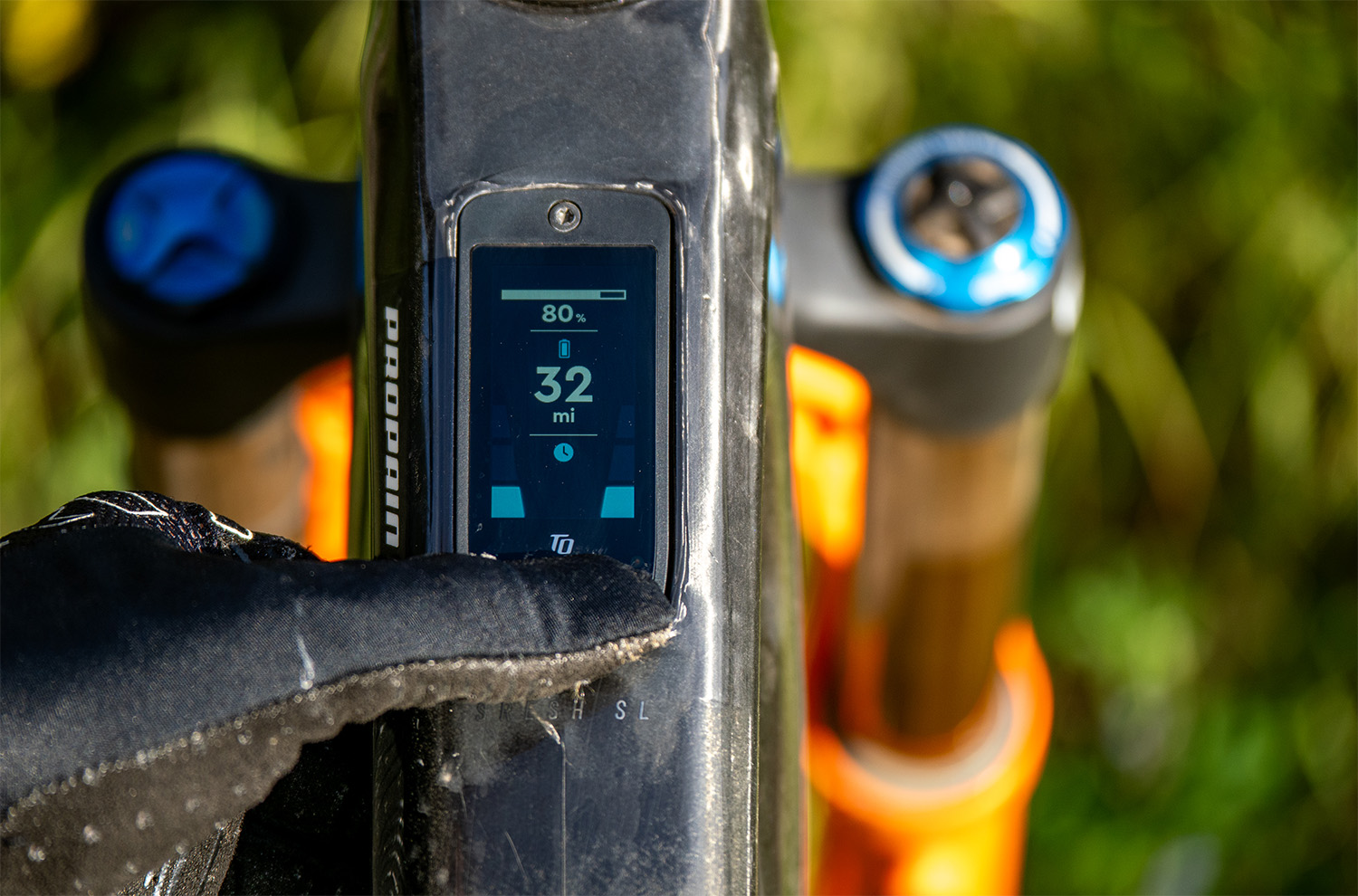
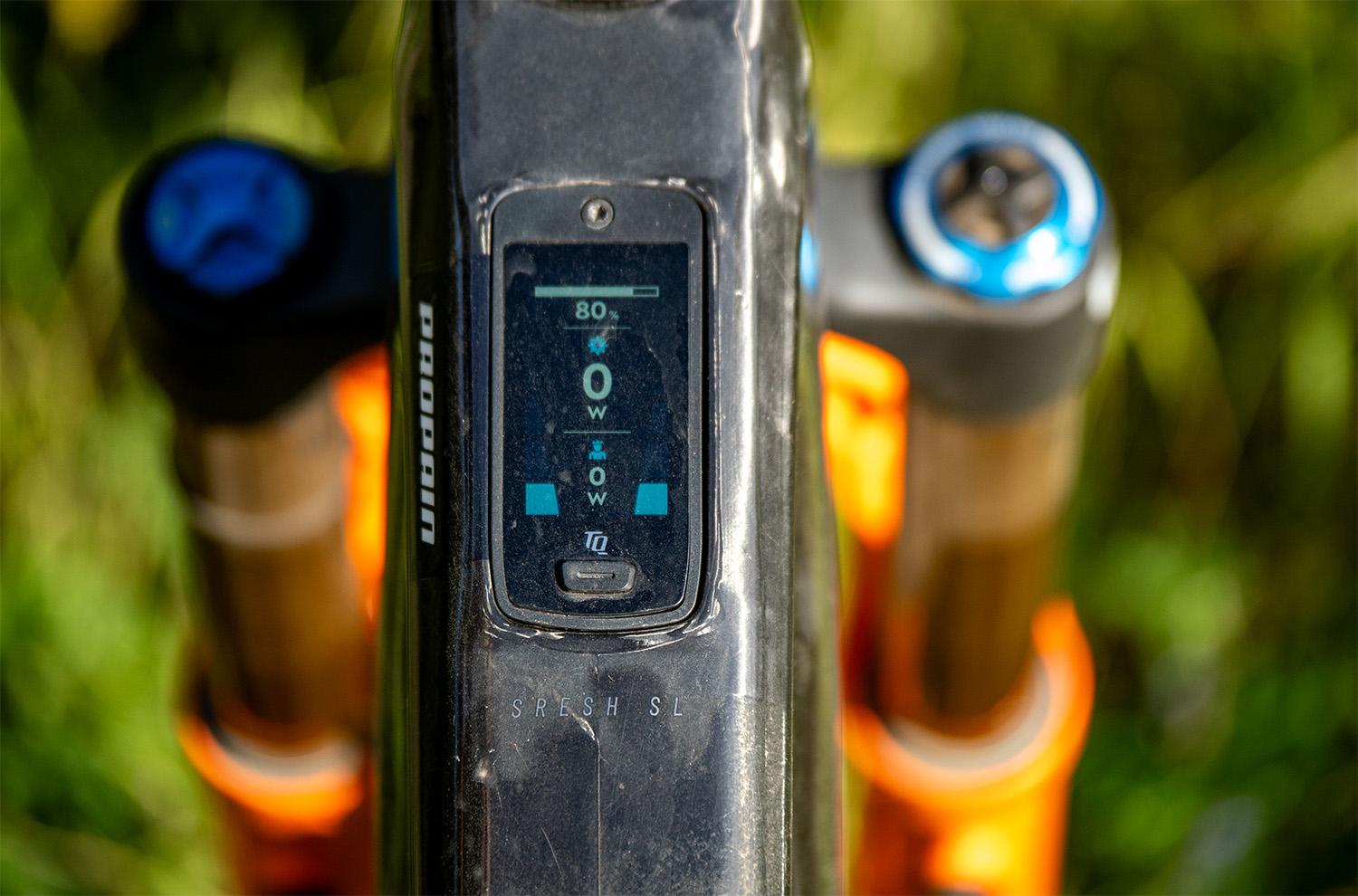
It’s also worth noting that the Sresh SL has one of the easiest batteries to remove of the eMTBs I’ve tested. There’s a really handy switch on the battery cover at the bottom of the downtube, and sliding this switch removes this cover. Inside this cover, you’ll find a Propain multi-tool, which includes the 4 mm allen key you’ll need to unscrew the bolt that holds the battery in the bike. This bolt is located on the underside of the downtube, near the steer tube. Undo the wired connection at the bottom of the battery near the motor, unscrew the bolt, and the battery slides out of the frame. I could see this feature being very useful for folks who need to remove their battery to charge it, or need easy removal of the battery for another reason.
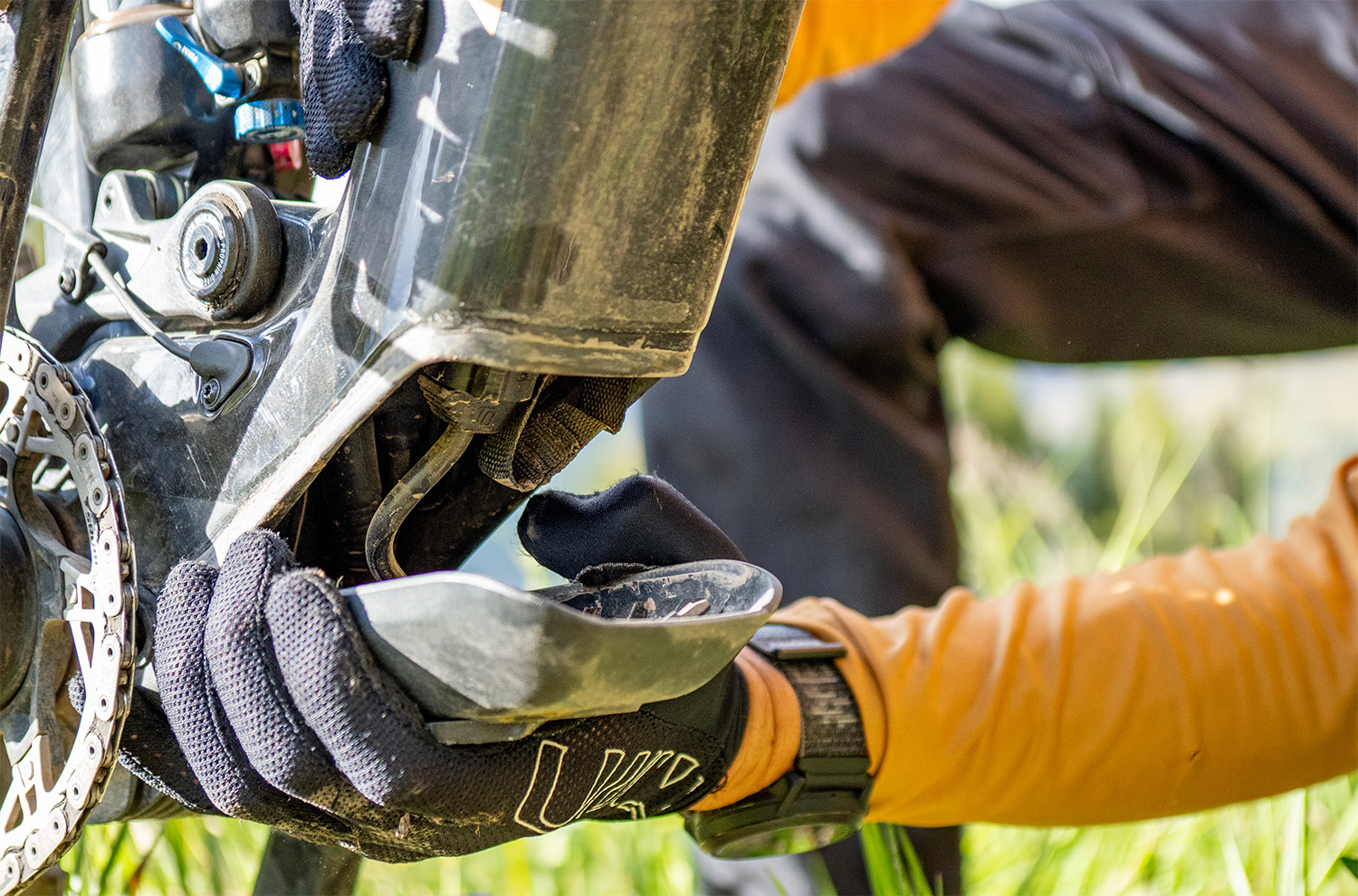
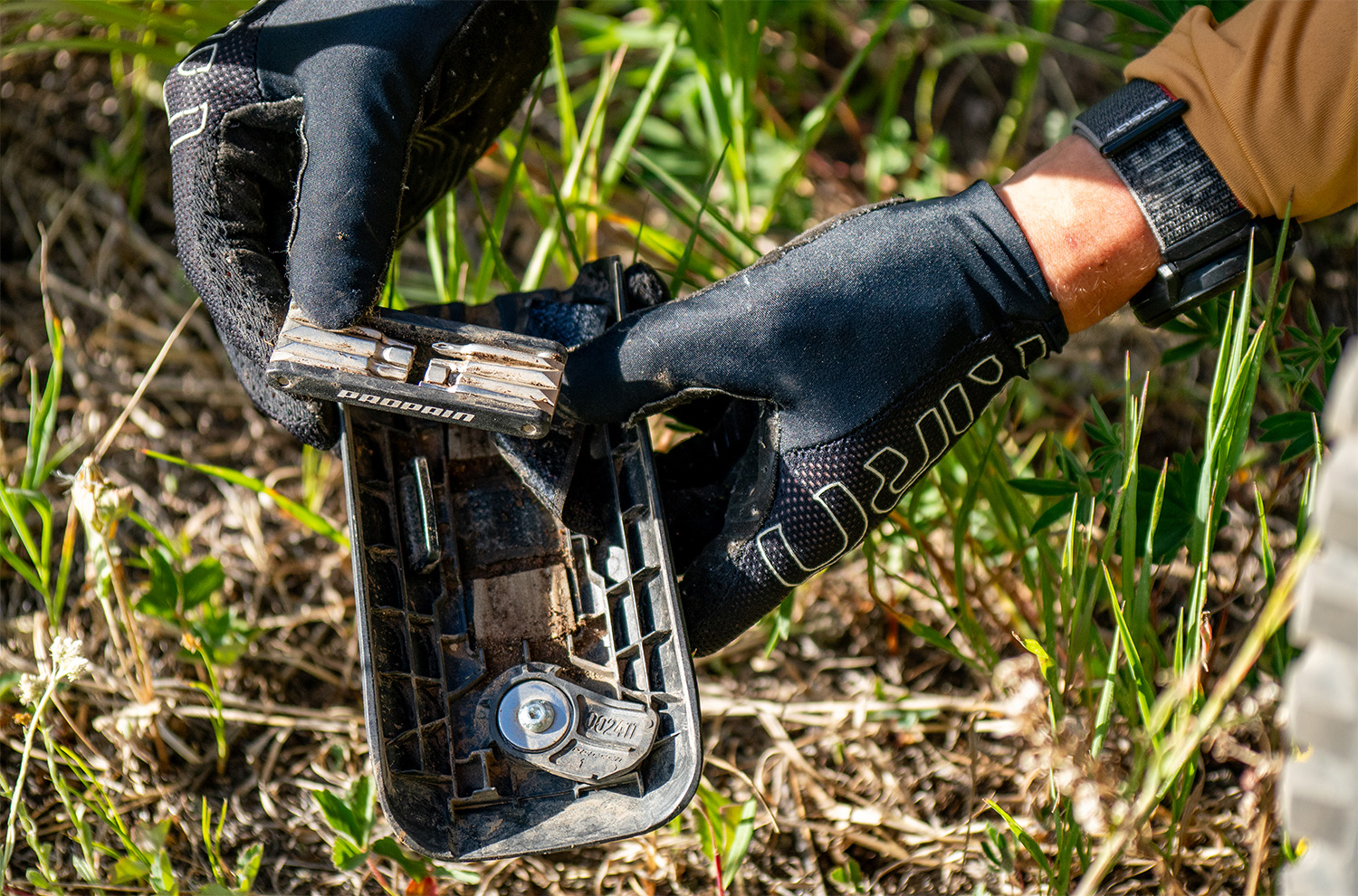
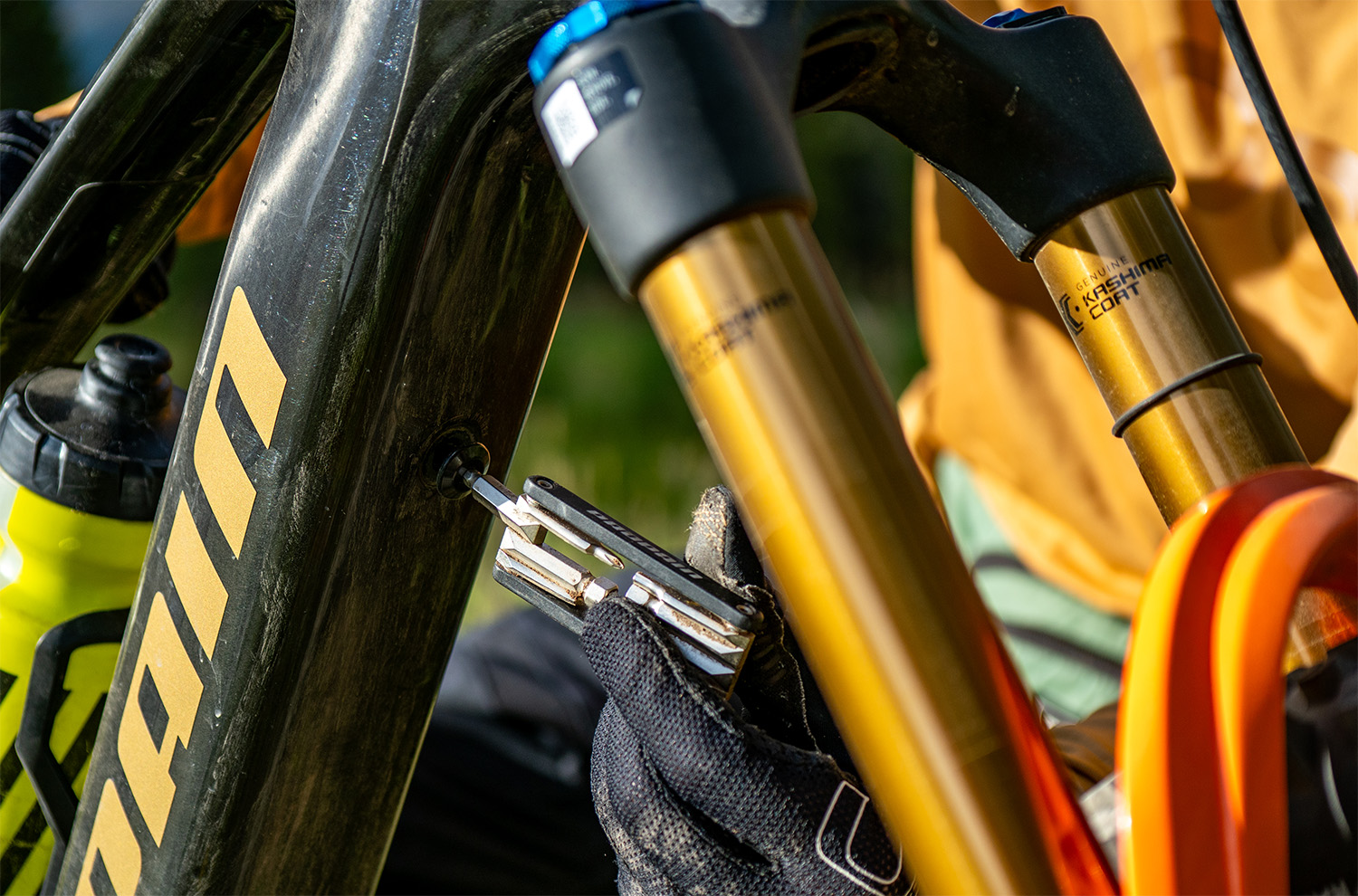
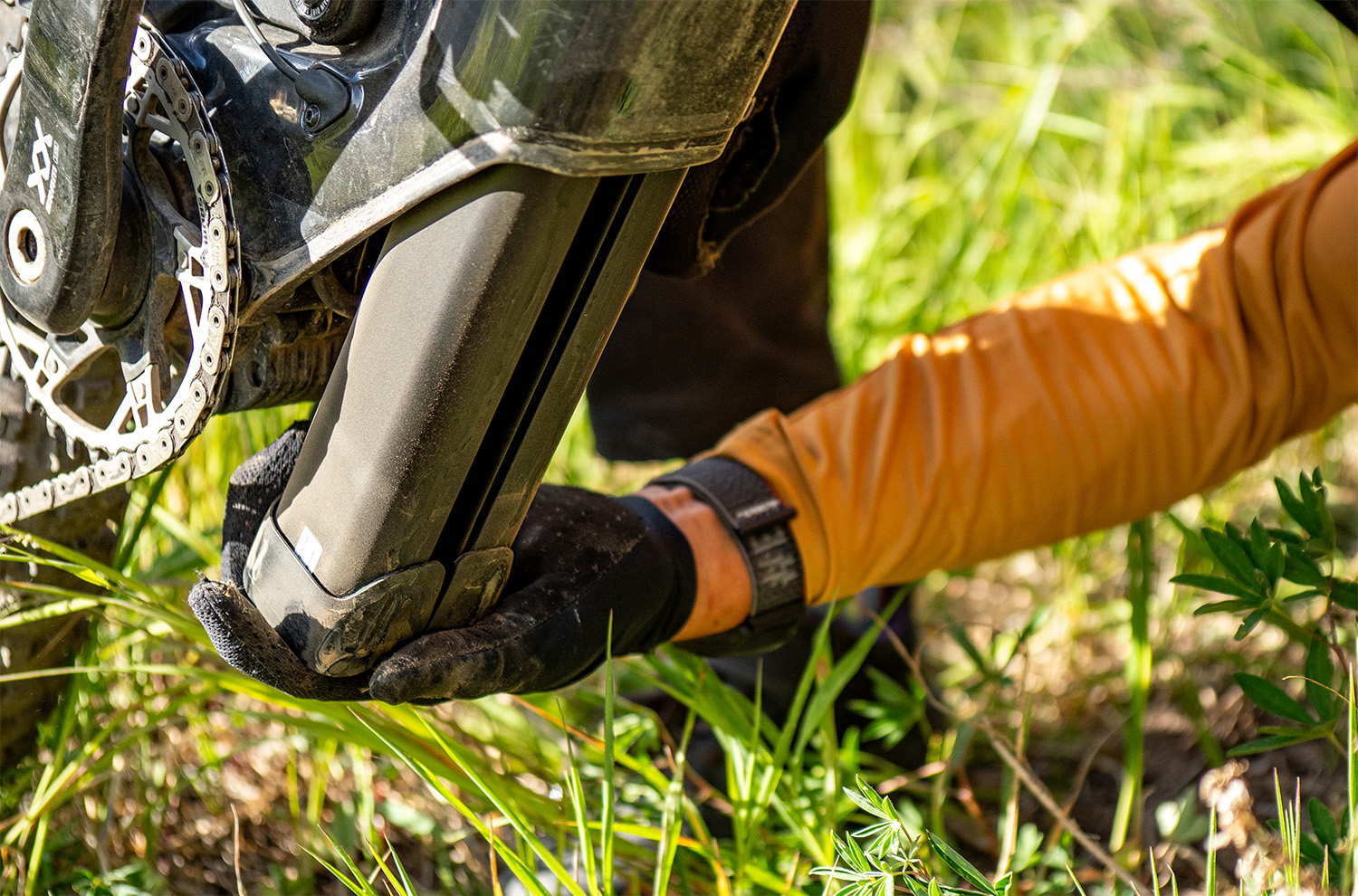
The Build
I don’t want to spend too much time here, as Propain allows you to customize your Sresh SL to very impressive degrees. The build kit I tested was a custom one with a nice combination of parts that complement the Sresh SL.
As per usual, I enjoyed the Fox Factory suspension on the Sresh SL. I was a bit disappointed to get the older, 2025 Fox 36 fork on this bike, given how well the new 36 performs, but it certainly didn’t take much away from my riding experience. However, it’s worth noting that the Sresh SL is now shipping with the MY26 Fox 36 fork. I also found the Float X to be a good pairing with the Sresh SL.
My first experience with Magura MT7 HC3 brakes was on the Sresh SL. Overall, I enjoyed these brakes, as they provided adequate power and good modulation that kept me feeling confident aboard the Sresh SL. I particularly enjoyed the ergonomics of the HC3 brake levers, though I do understand that’s a pretty personal thing. Overall, though, I find myself preferring SRAM’s Maven brakes, and given that you can get a set of Maven Silvers on the Sresh SL for $130 less than the Magura MT7s, that would be my choice had I been able to customize this bike myself.
I enjoyed the DT Swiss EX1700 wheelset on the Sresh SL, which provided a compliant and smooth feel. I did need to true up the rear wheel about halfway through the test period, but given the abuse this wheel saw, aboard multiple of my test bikes, I don’t blame it. I also really enjoyed the Schwalbe radial tires on the Sresh SL, with an Albert Trail 2.5” both front and rear, coming in the Ultra Soft compound up front, and Soft compound out back. These tires felt incredibly smooth and grippy, and I found myself preferring them with about 26 psi up front and 28 psi out back.
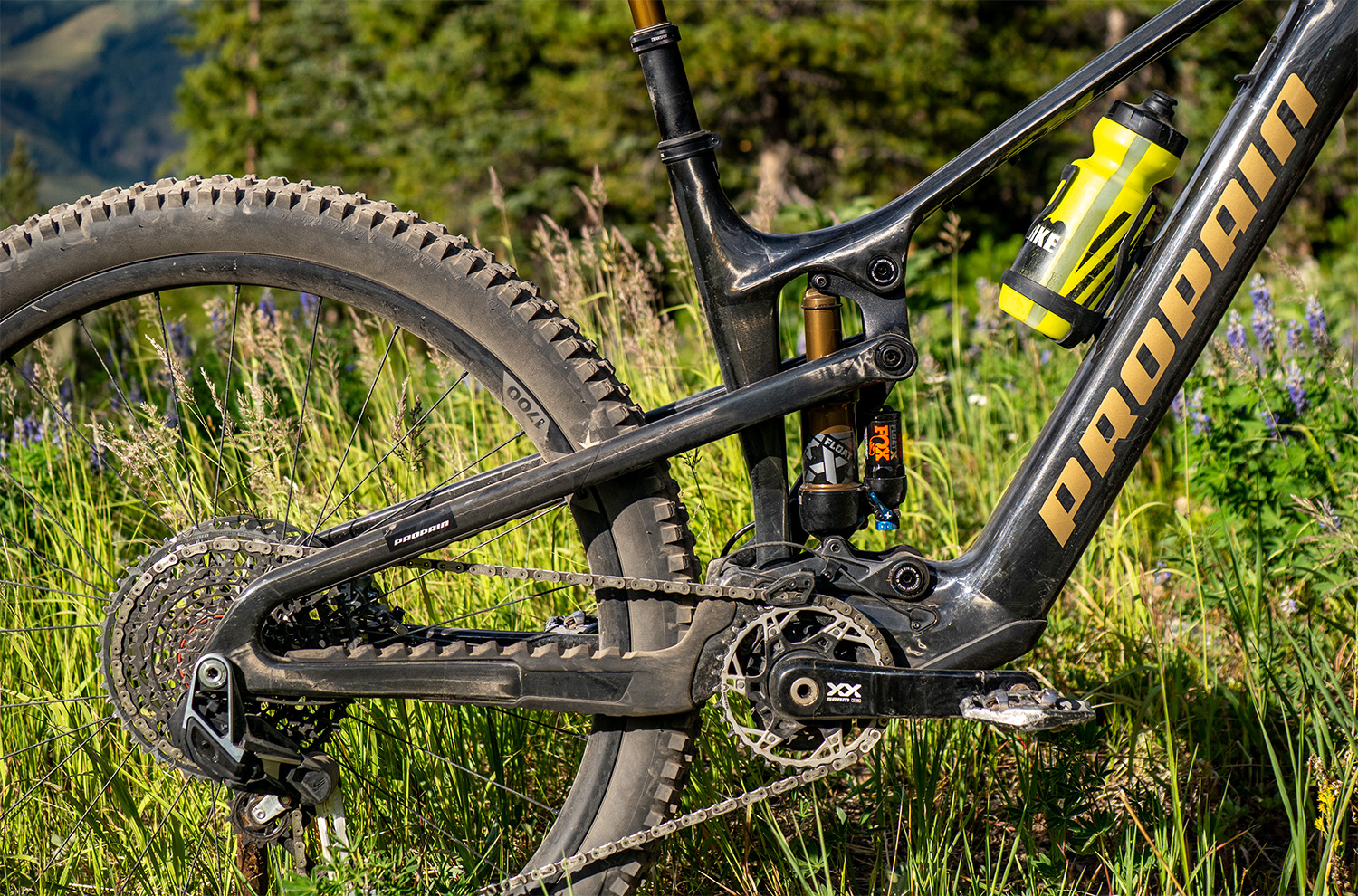
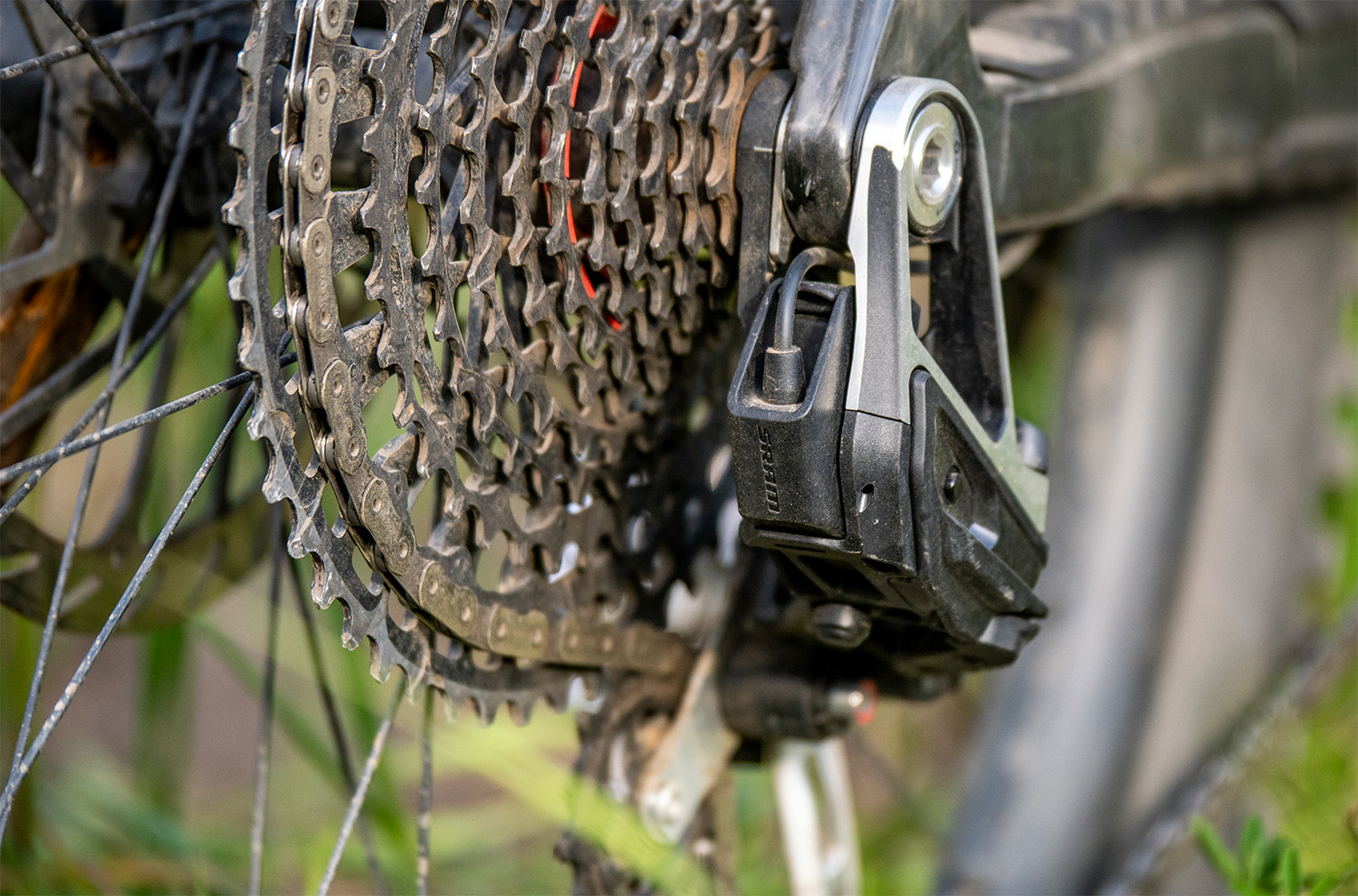
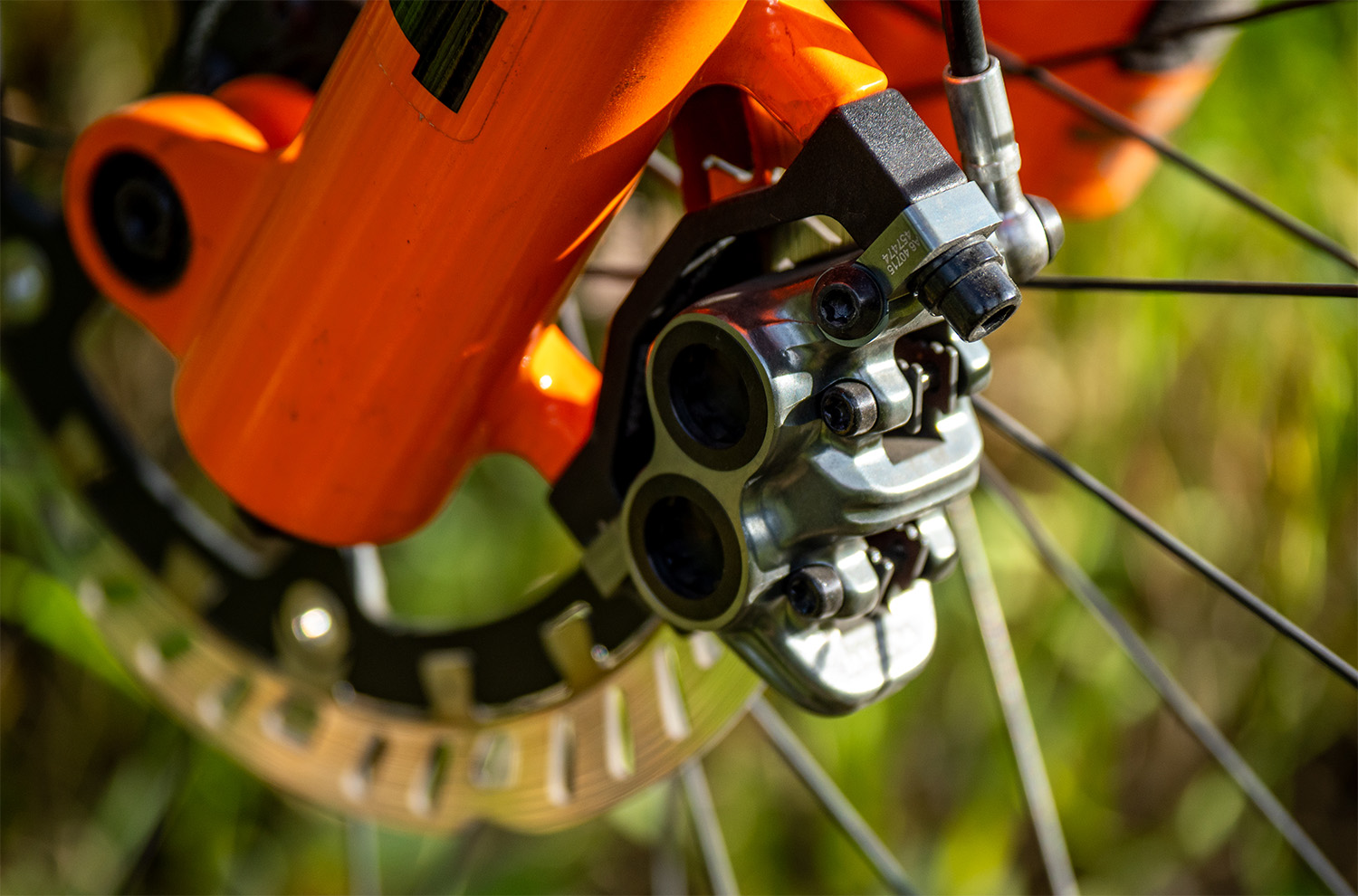
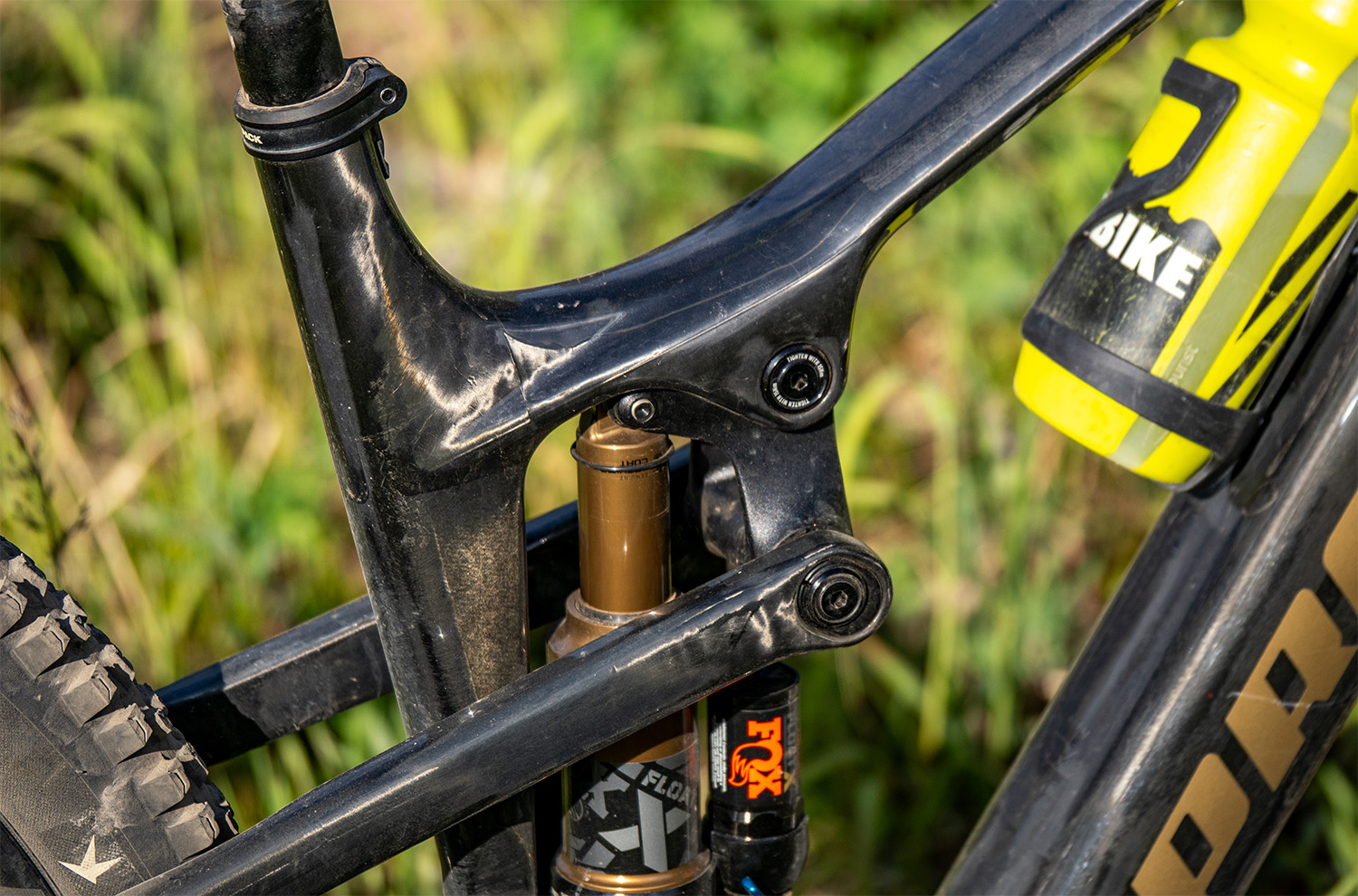
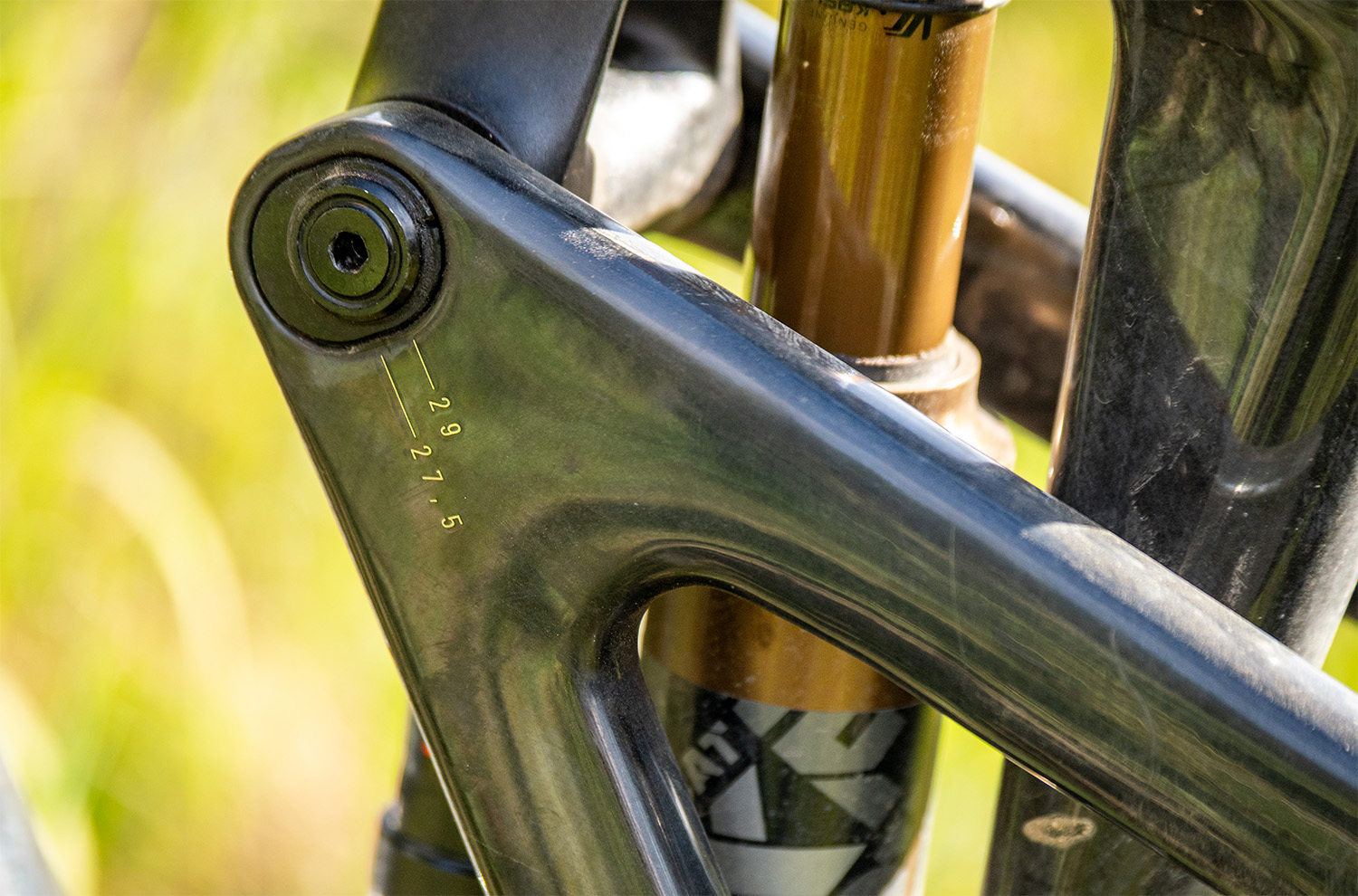
SRAM’s Transmission drivetrains continue to impress me with their shifting precision and performance under load, and the XX Eagle Transmission drivetrain on my Sresh SL was no exception. Though I’d personally opt for the GX Eagle Transmission drivetrain myself, saving $950 at the cost of ~200-300 grams (about half a pound). I enjoyed having the derailleur wired into the main battery, too, though this also meant that the Sresh SL needed to be powered on (not necessarily with pedal assist, just turned on) for any kind of shifting to happen. This did make me question what would happen if I ran out of battery, and I did get an answer. When the Sresh SL gets to 2% battery life remaining, it foregoes all pedal assist and saves the remaining juice for the derailleur — smart. 2% of a 580 Wh battery is 11.6 Wh, and given that a SRAM AXS battery contains just ~2.2 Wh itself, you’d be hard pressed to run out of shifting power aboard the Sresh SL, should you choose to go the wireless route.
I’m grateful that I got along with the Sresh SL with the stem configured how it came in the box, because, quite frankly, I really wasn’t looking forward to messing with the internal headset routing within the Sixpack Millennium ICR stem that came on my test bike. Fortunately, though, the Sresh SL can be run with standard internal cable routing, and I’d recommend this route for most folks, especially if you know you’ll want to do some experimenting with the bar height.
Overall, I’m mostly just happy that Propain gives customers so much freedom in choosing what parts they want on their bike, and with the custom build kit I tested coming in at $10,299, it’s priced competitively, too.
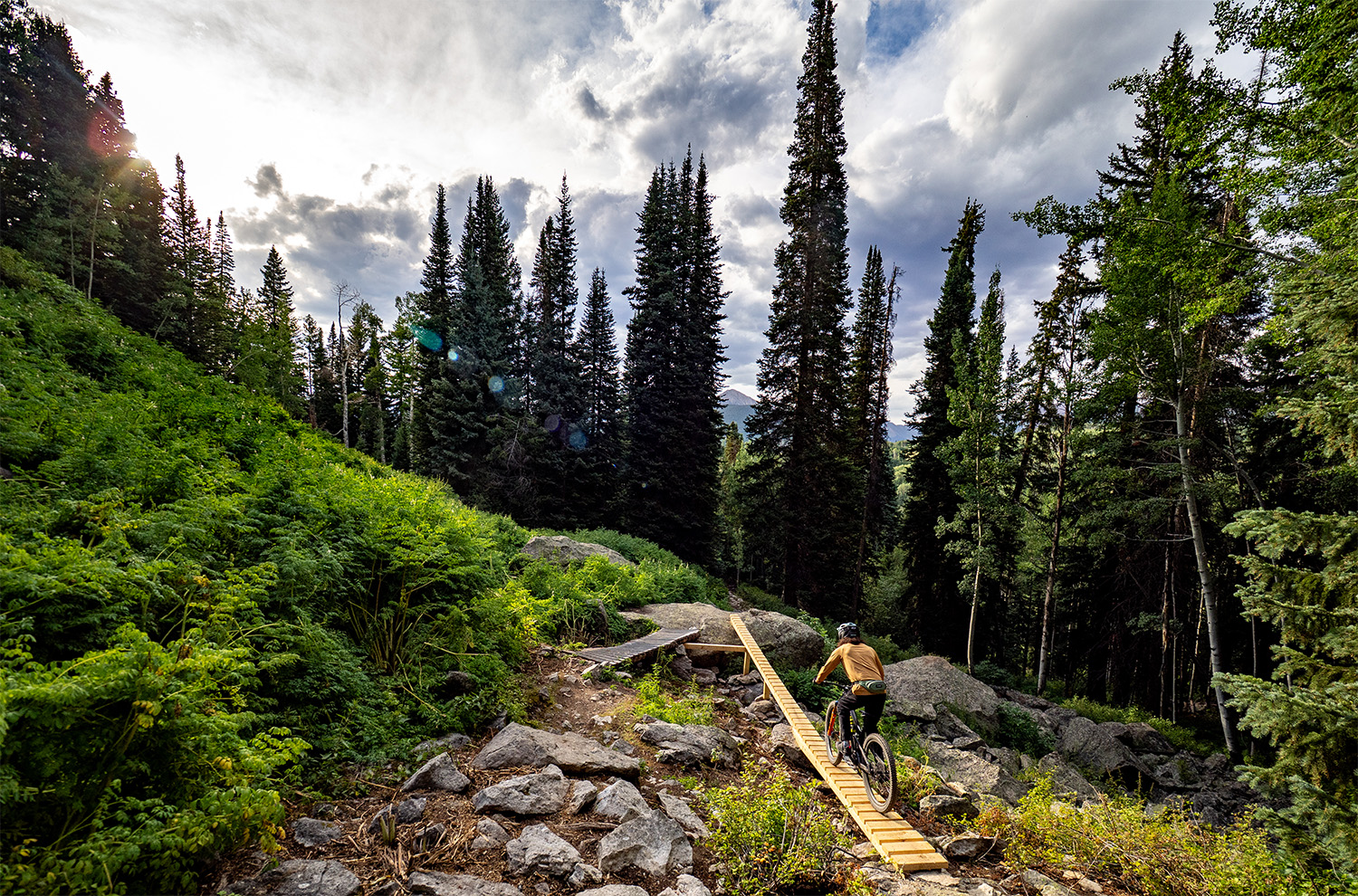
Who’s It For?
The Sresh SL is a truly versatile option that provides impressive stability, respectable maneuverability, and a suspension platform that provides a bit more support than the average mid-travel eMTB. If you are after an eMTB that provides a ride very reminiscent of unpowered MTBs, the Sresh SL should certainly be on your radar. Its balanced yet impressively mighty TQ HPR60 drive system, paired with familiar geometry and suspension performance, makes it a ride that’s easy to get used to. Combine this with stable and adjustable geometry and suspension that allows for a wide range of trails to be enjoyed, and the Sresh SL is a solid option for folks who will be asking their lightweight eMTB to do a lot of different things.
Bottom Line
With the Sresh SL, Propain has managed to make an exceptionally versatile lightweight eMTB, making impressively few sacrifices for a bike that handles such a wide variety of terrain so well.
Deep Dive Comparisons
BLISTER+ members and those who purchase our Digital Access Pass can check out our Deep Dive comparisons linked below. Get our Digital Access Pass to view all our Deep Dives and Flash Reviews, or become a BLISTER+ member today to get access to that and a LOT more, including the best worldwide Outdoor Injury Insurance, exclusive deals and discounts on skis, personalized gear recommendations from us, and much more.
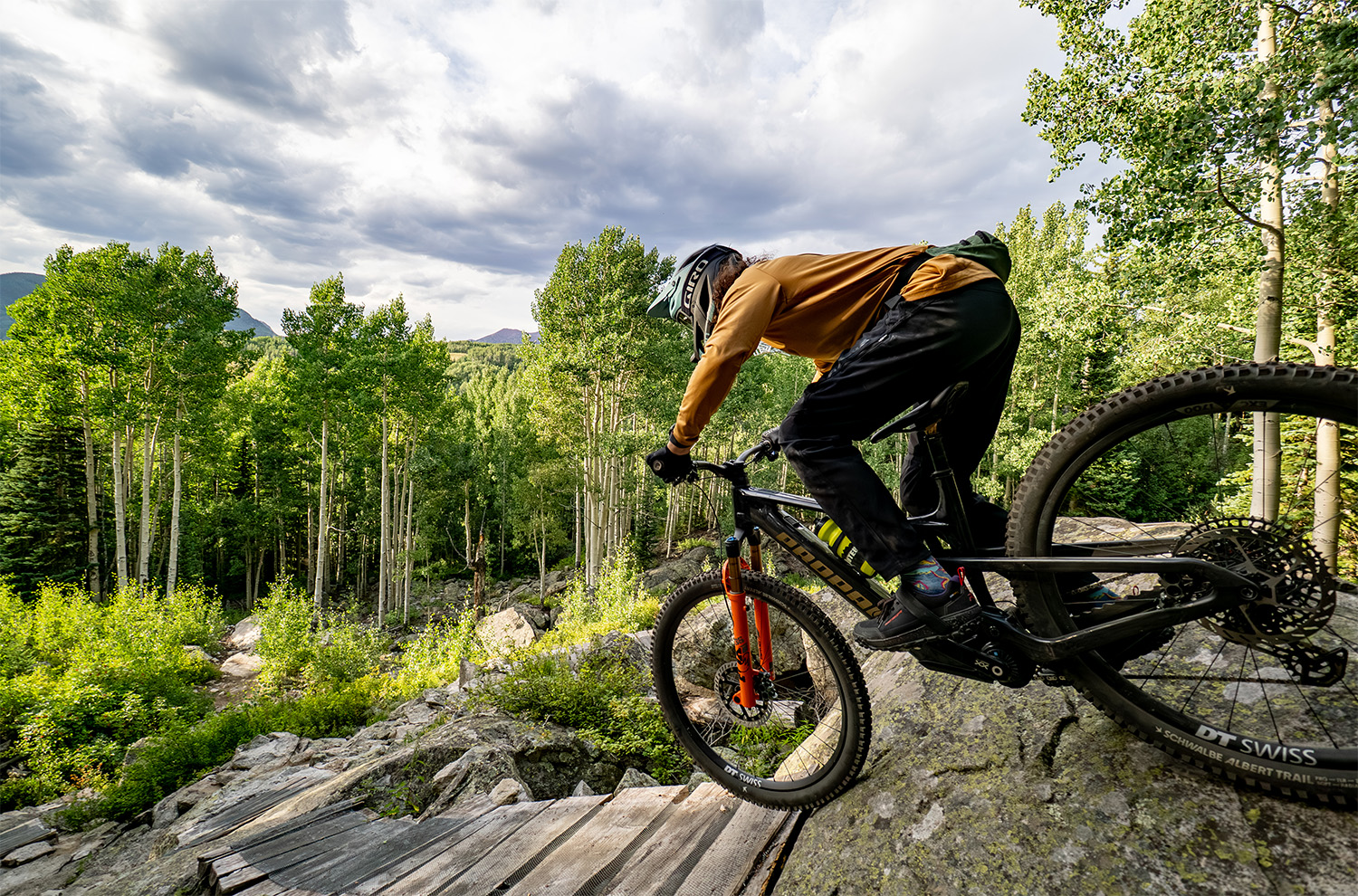
Deep Dive: Propain Sresh SL
We compare the Propain Sresh SL to the Yeti MTe, Pivot Shuttle SL/AM, Pivot Shuttle SL, Norco Fluid VLT 130, Santa Cruz Heckler SL, Trek Fuel EXe, and Mondraker Dune XR.
Blister’s Flash Reviews and Deep Dives are accessible to those who purchase one of our paid subscriptions
To get our comprehensive Deep Dives and our initial, unfiltered reports on new gear, become a member and receive many other services, deals, and discounts.
If you’re already an active member, please log in.
(If you’re already logged in and a member in good standing and seeing this message in error, please refresh this page in your browser.)

That bike is dead sexy! Personally, I was kind of hoping TQ would jump from a 360 to a ~460 battery on this new version. My riding on a Fuel EX-e indicates that would be the sweet spot, for me anyway.
And I’m a fan of the racy stack heights, but not so much the 78 degree STA.
Looking forward to the ride review!
Curious about range on this (and most mid-power eMTBs). The article has a section titled Drive System and Range but doesn’t address range at all. That being said, what are your thoughts/experiences in the regard? Excellent review!
Hey Kevin, as I wrote above in the review section you’re referencing: “My first experience with the TQ HPR60 was on the Yeti MTe, which I rode alongside the Sresh SL for both of these bikes’ respective testing periods. You can check out my thoughts on this relatively new light/mid/whatever-you-want-to-call-it-assist system paired with the 580 Wh battery at this same section in our MTe Full Review. My thoughts on the Sresh SL’s drive system remain the same…”